
Dwight Street 2025




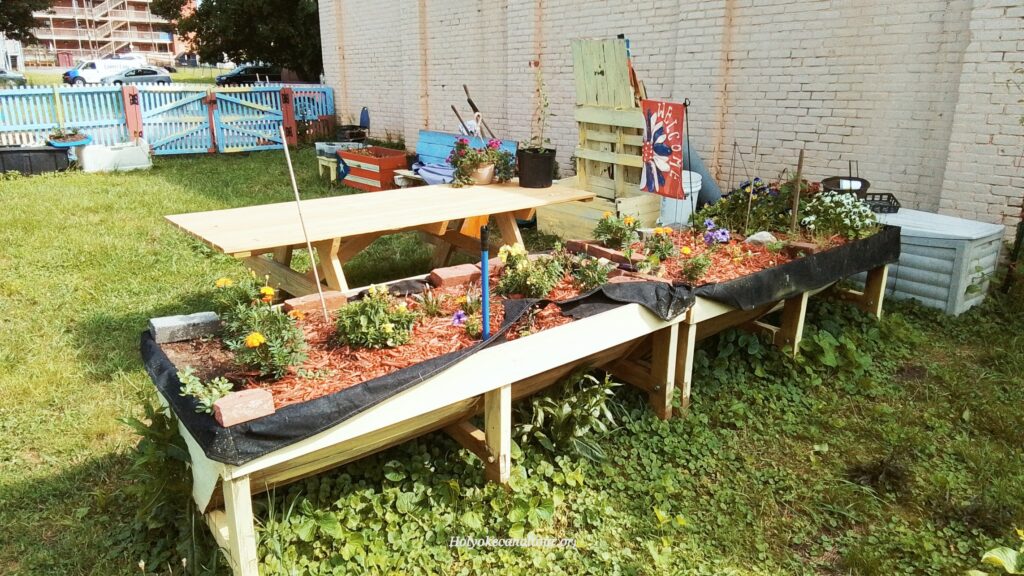
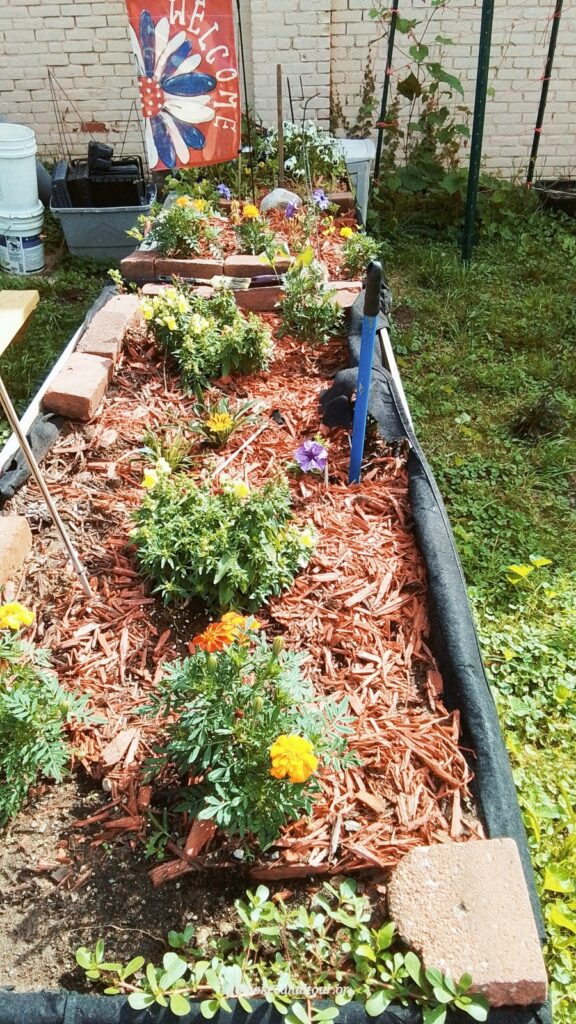
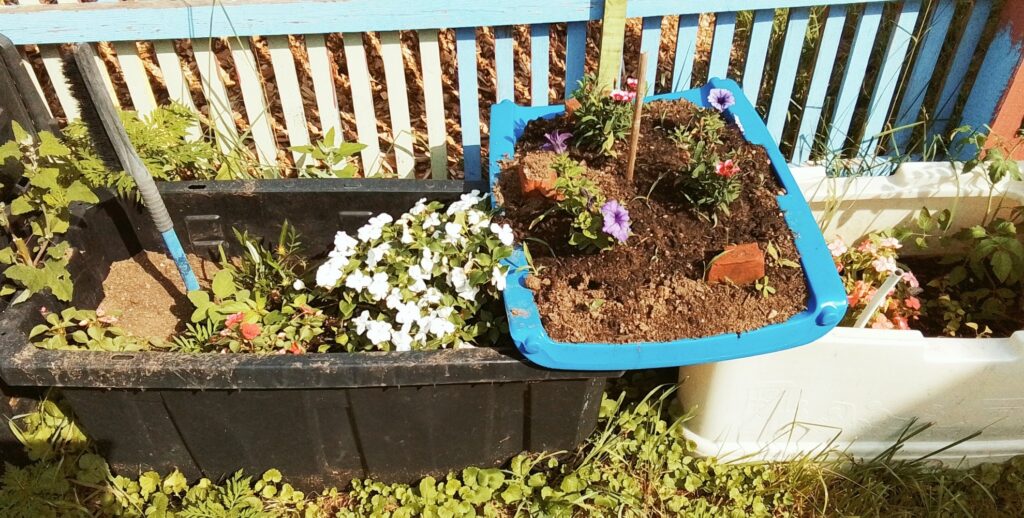
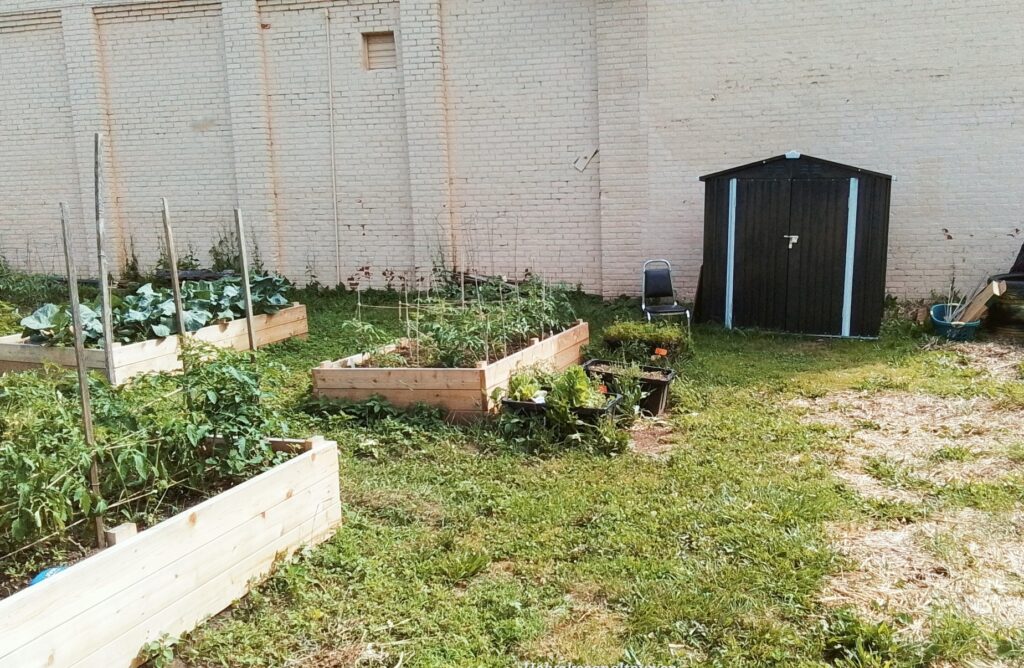
late summer 2024




Dwight Street Garden 2024 in the early spring

Dwight Street Garden 2023 in the fall

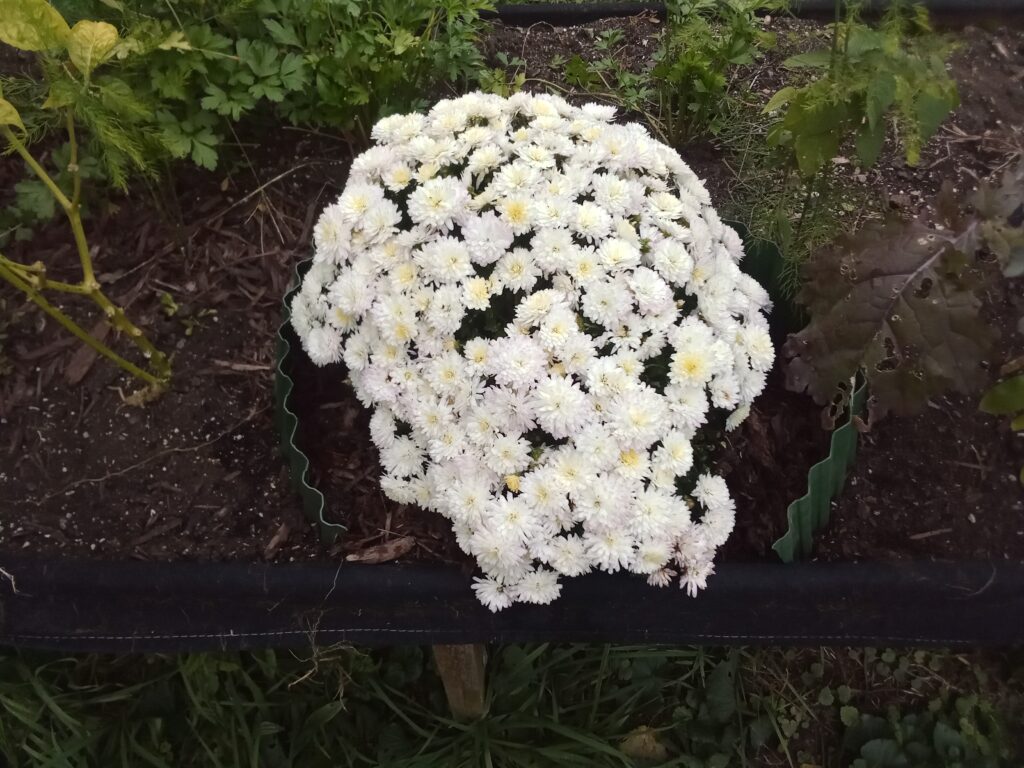
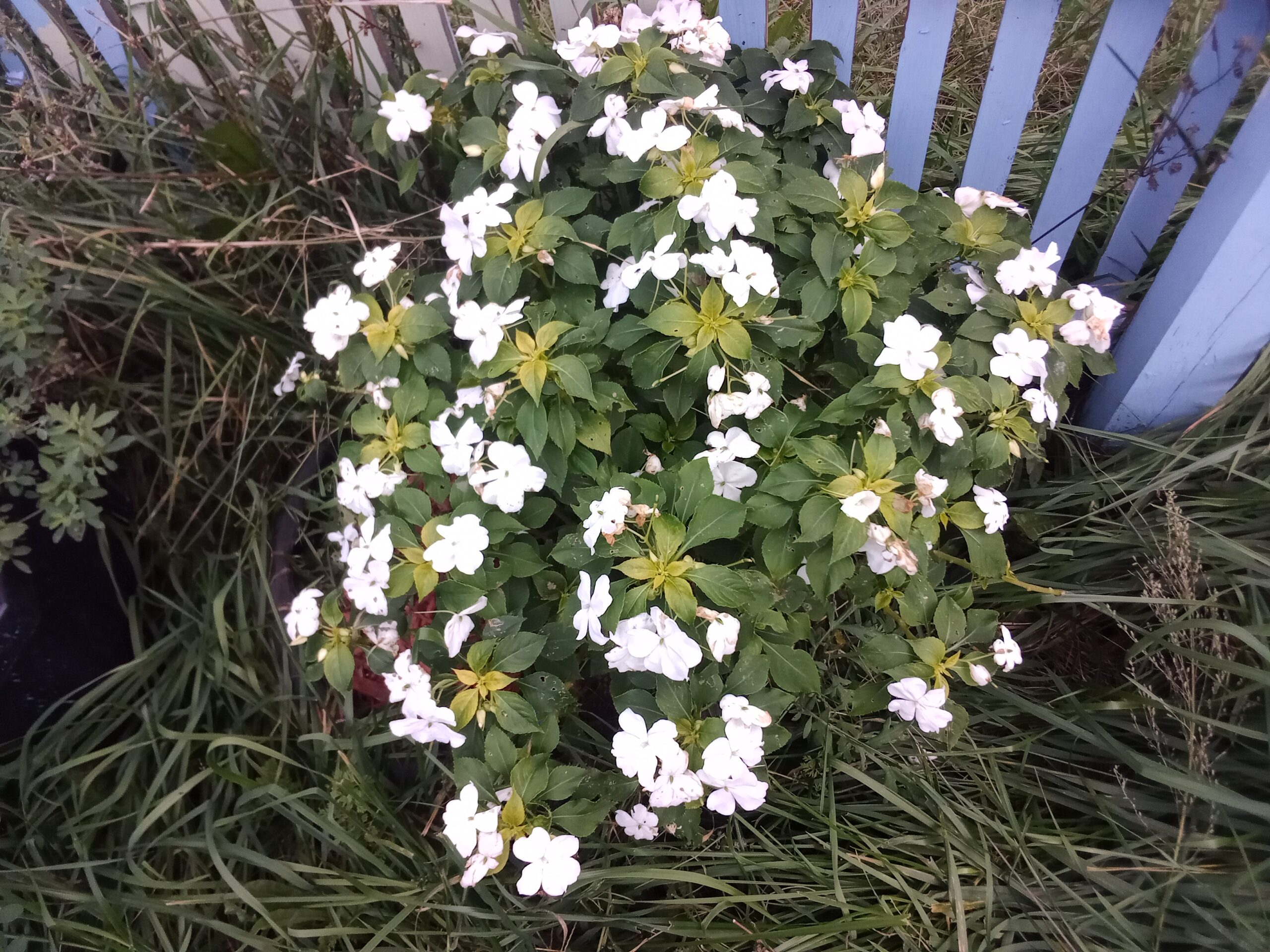

Dwight Street Garden 2023
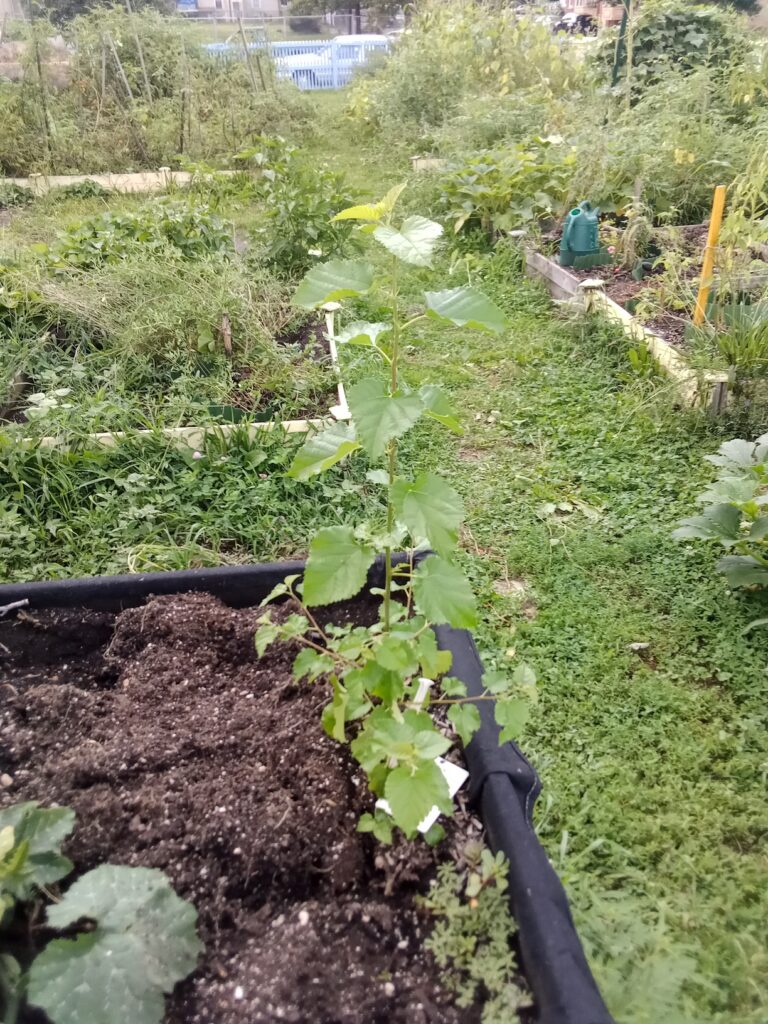

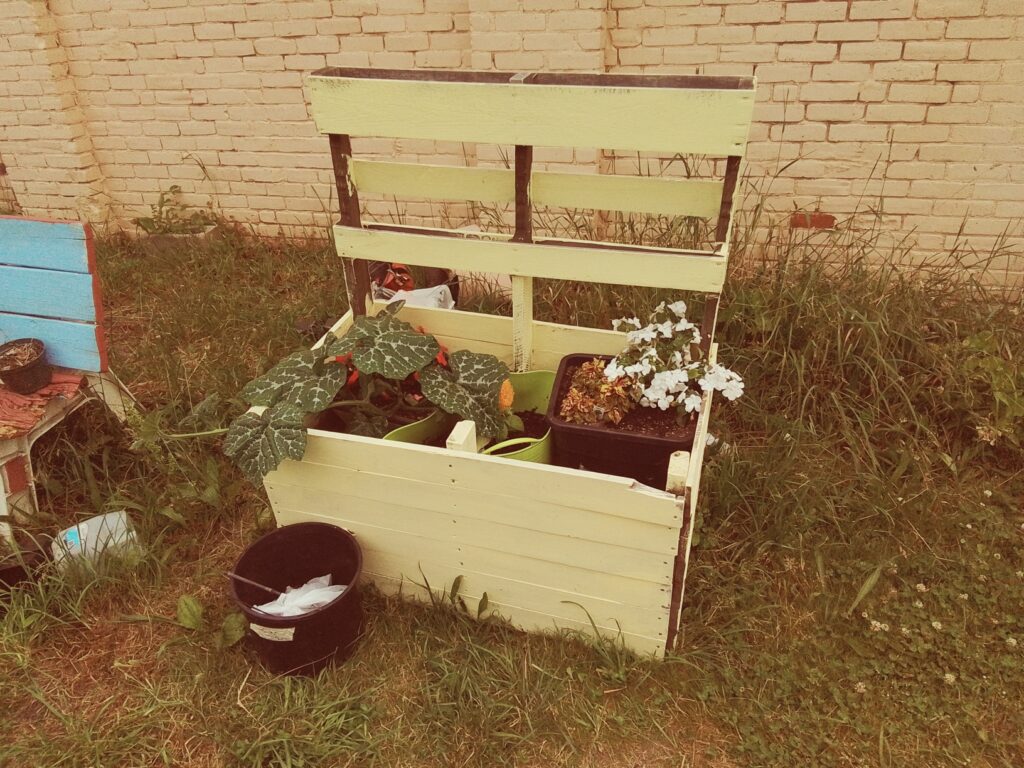
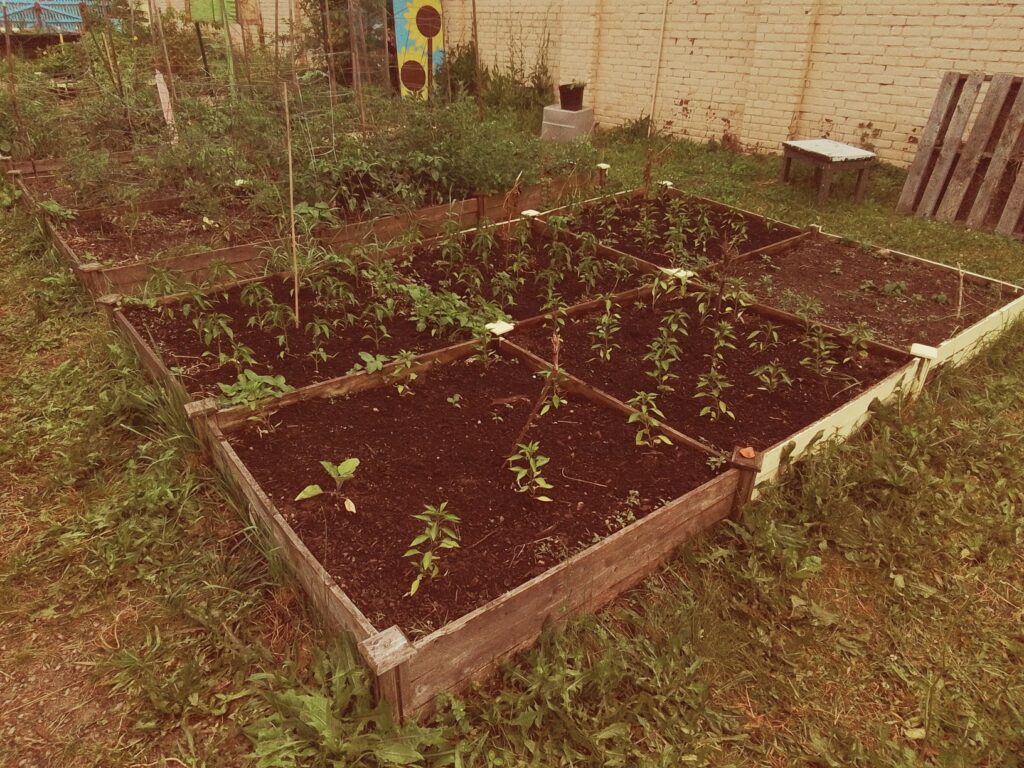
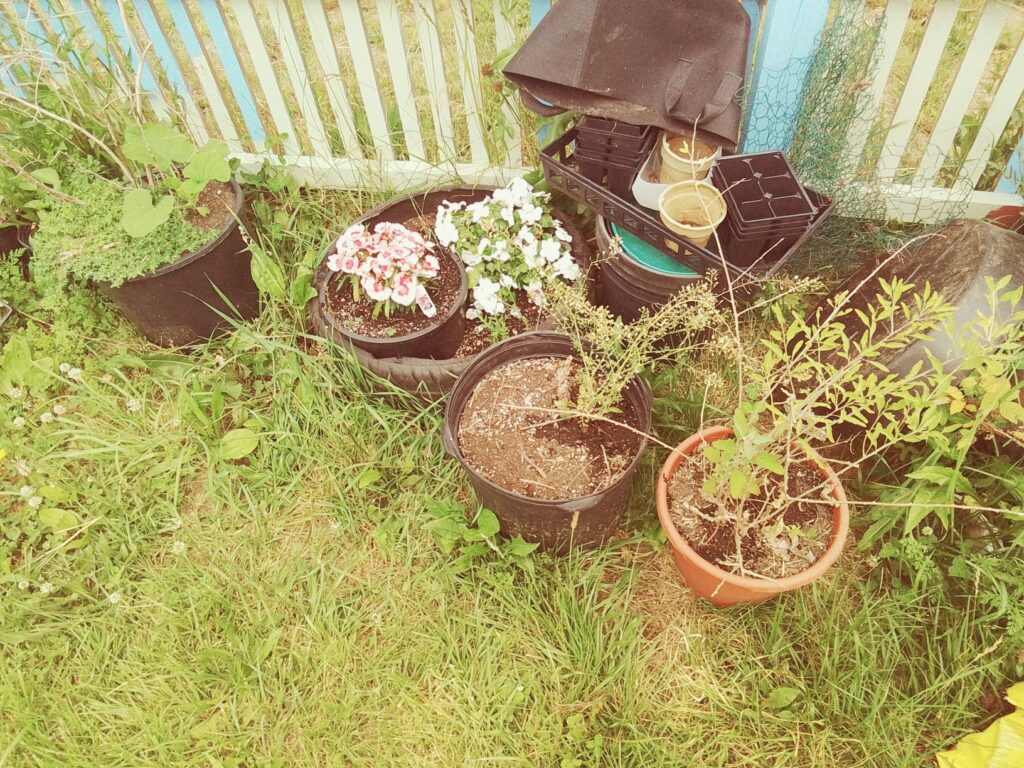
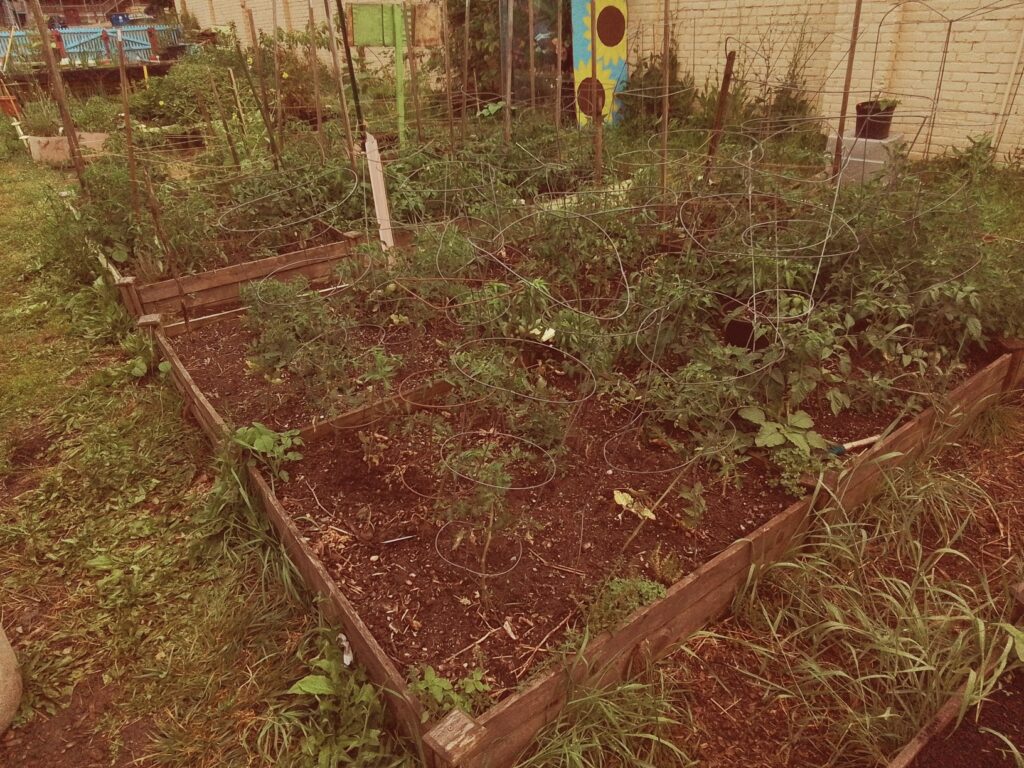
Dwight Street Garden 2023

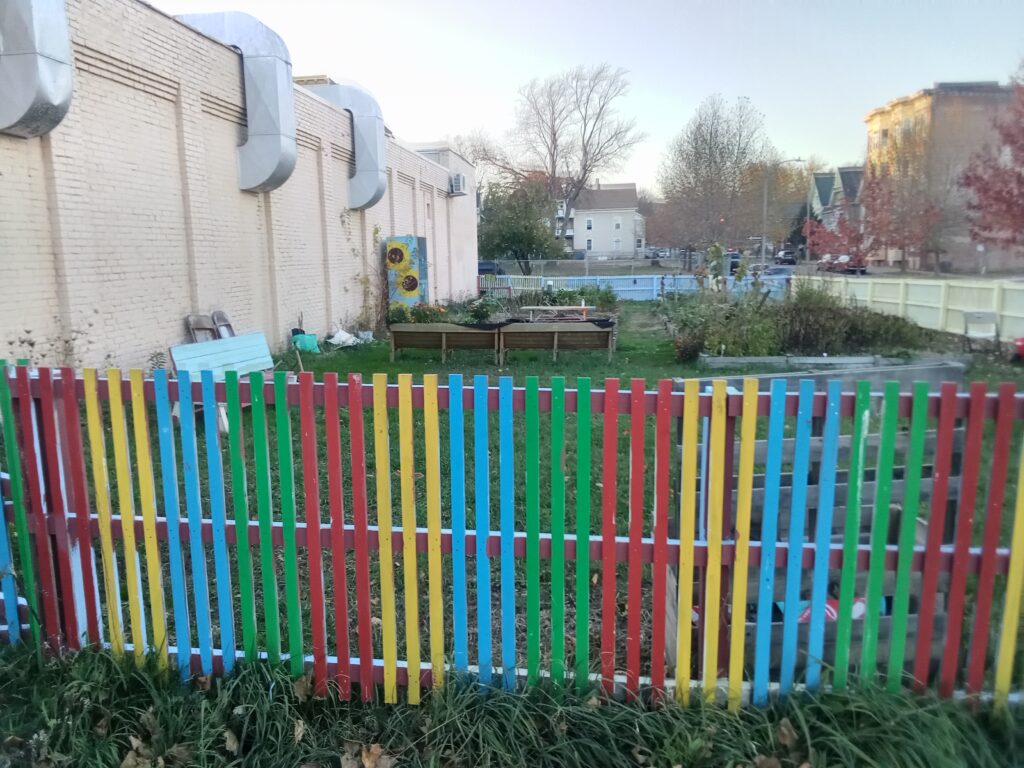
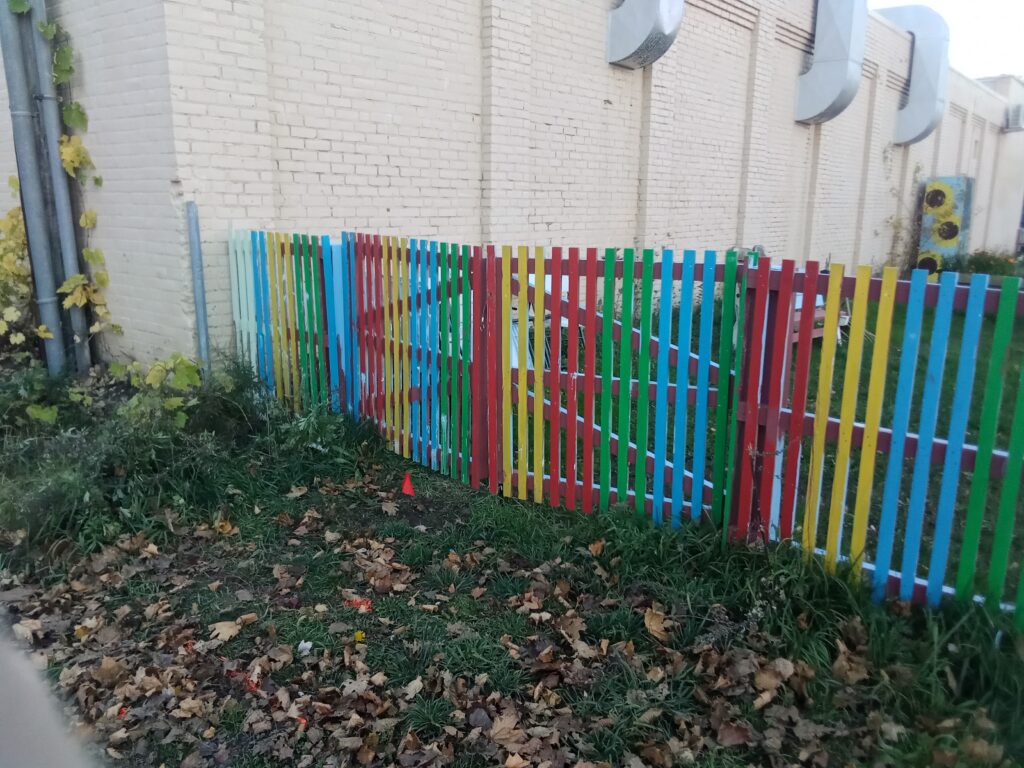

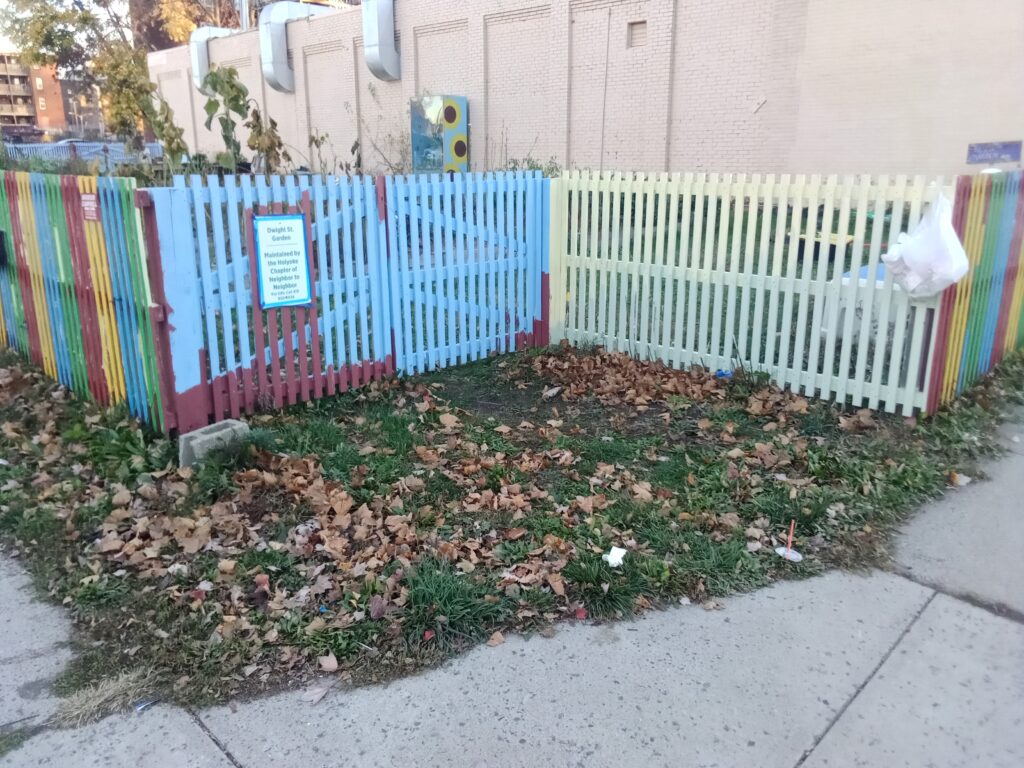

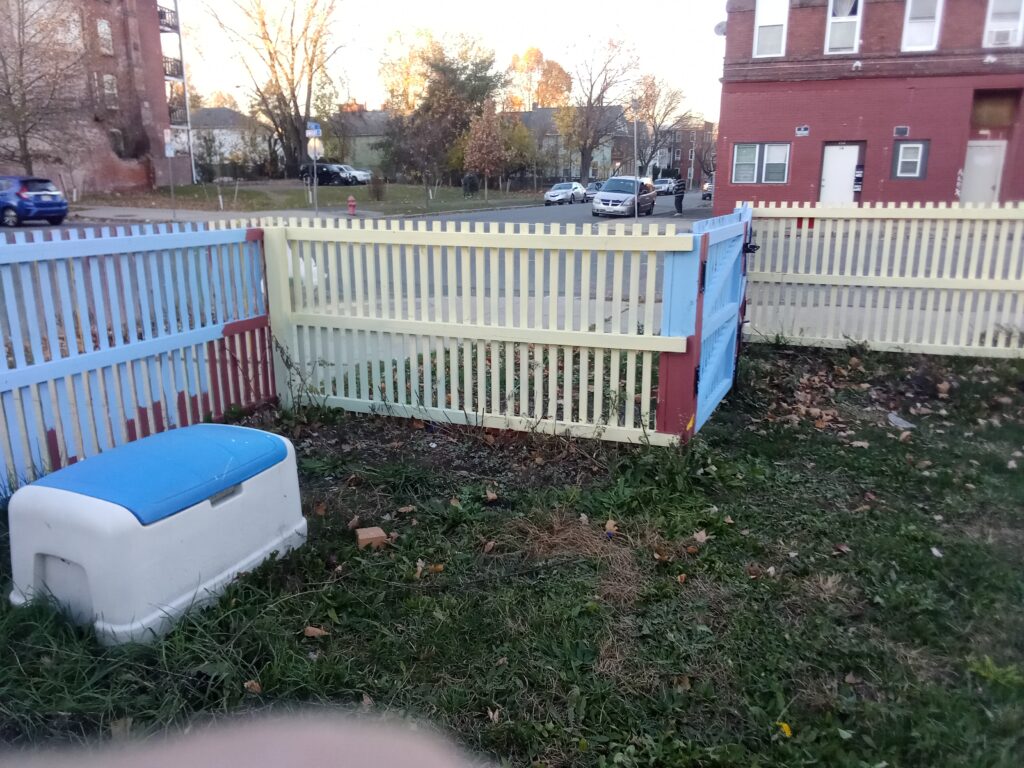
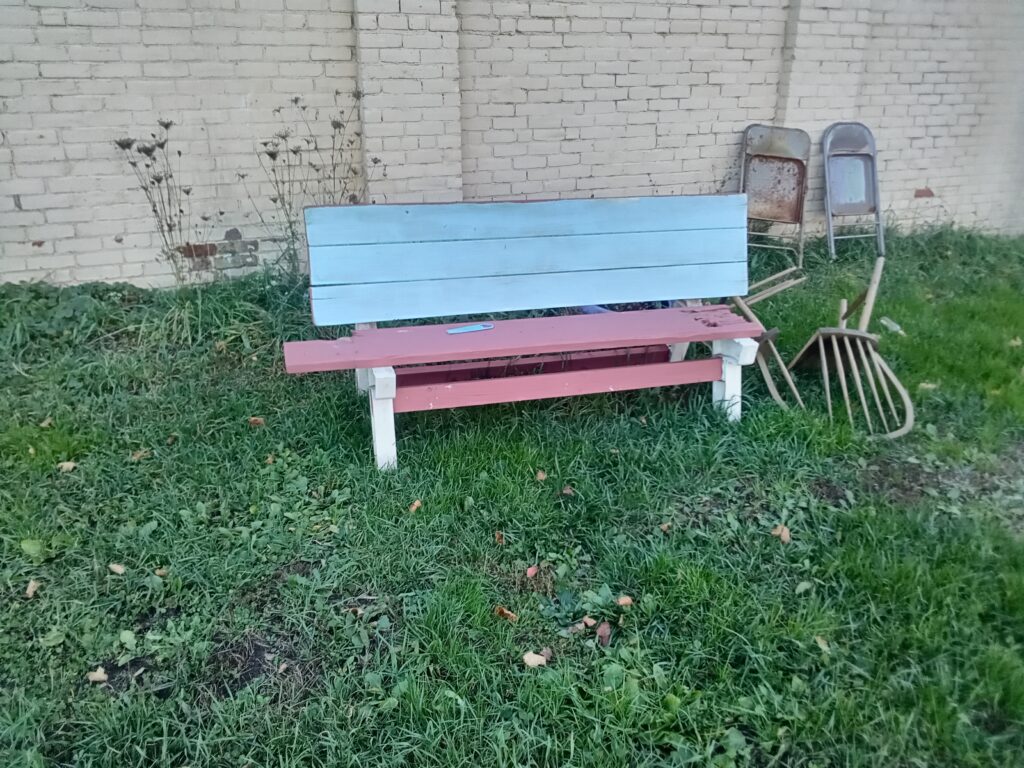
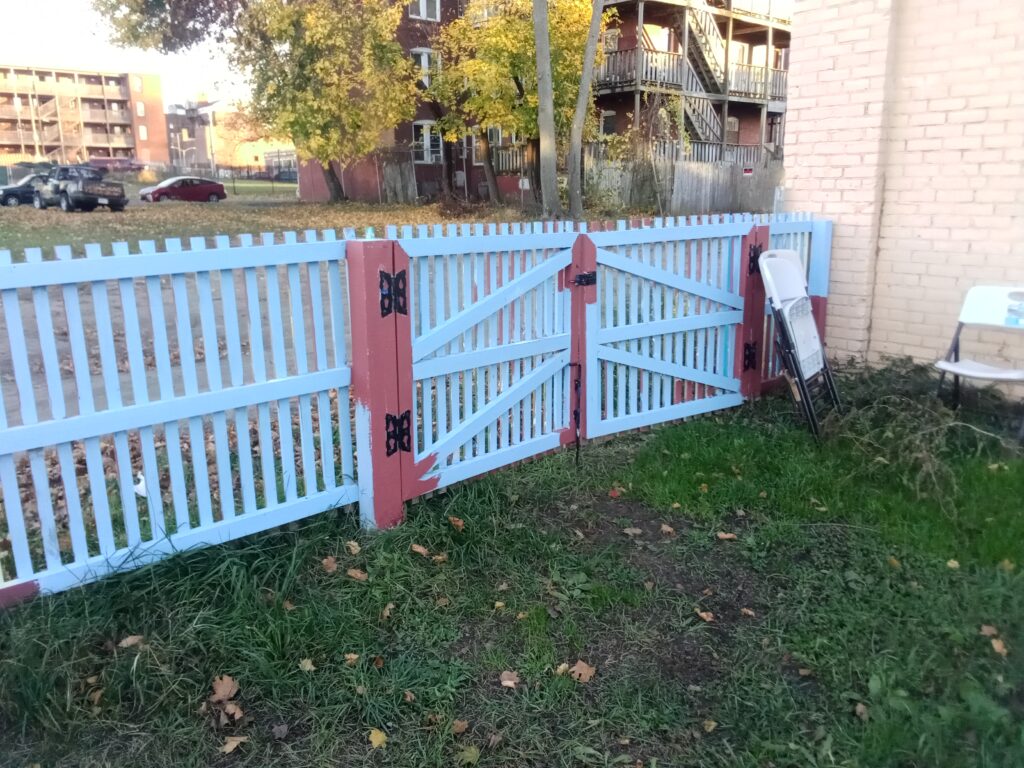
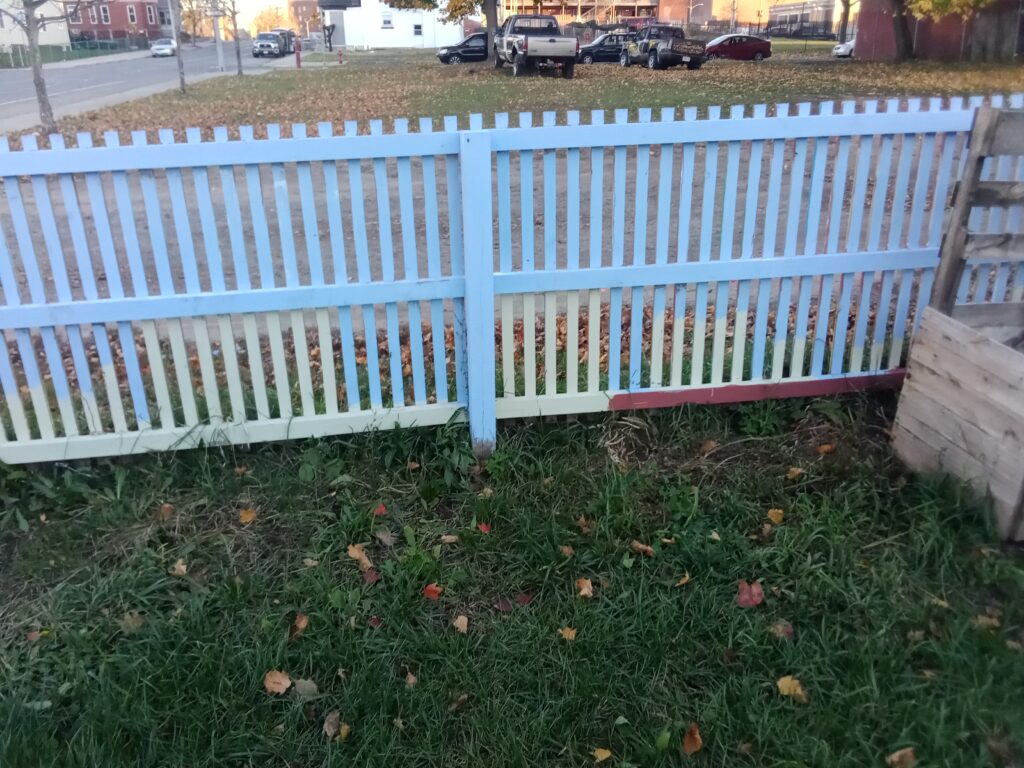


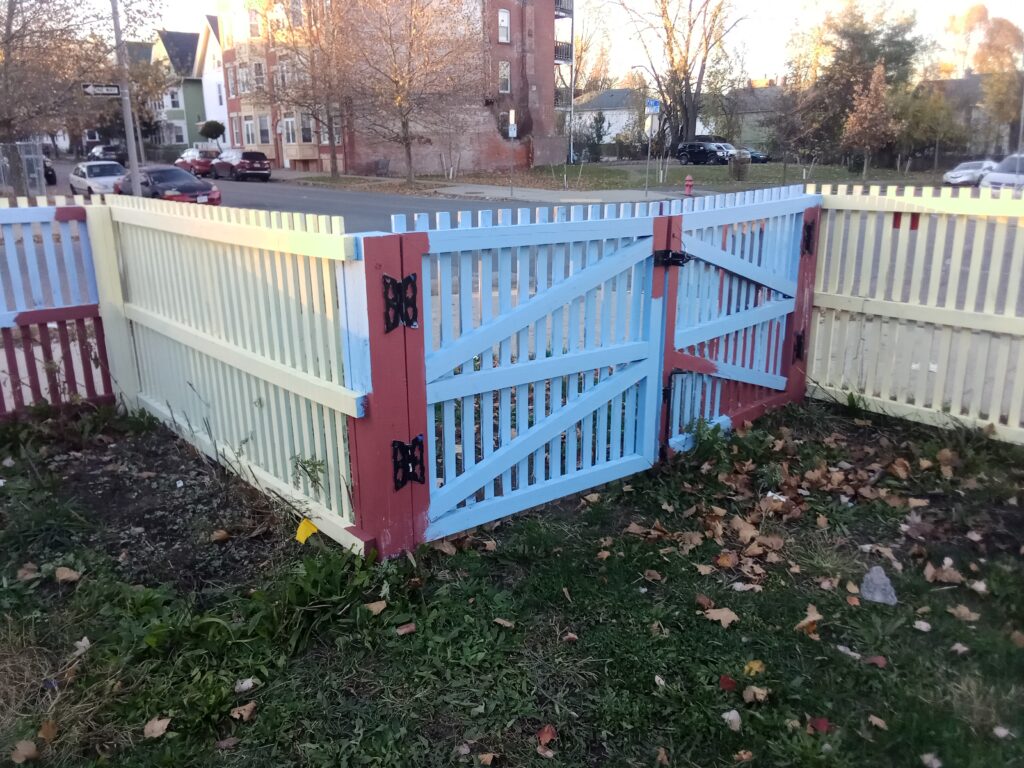
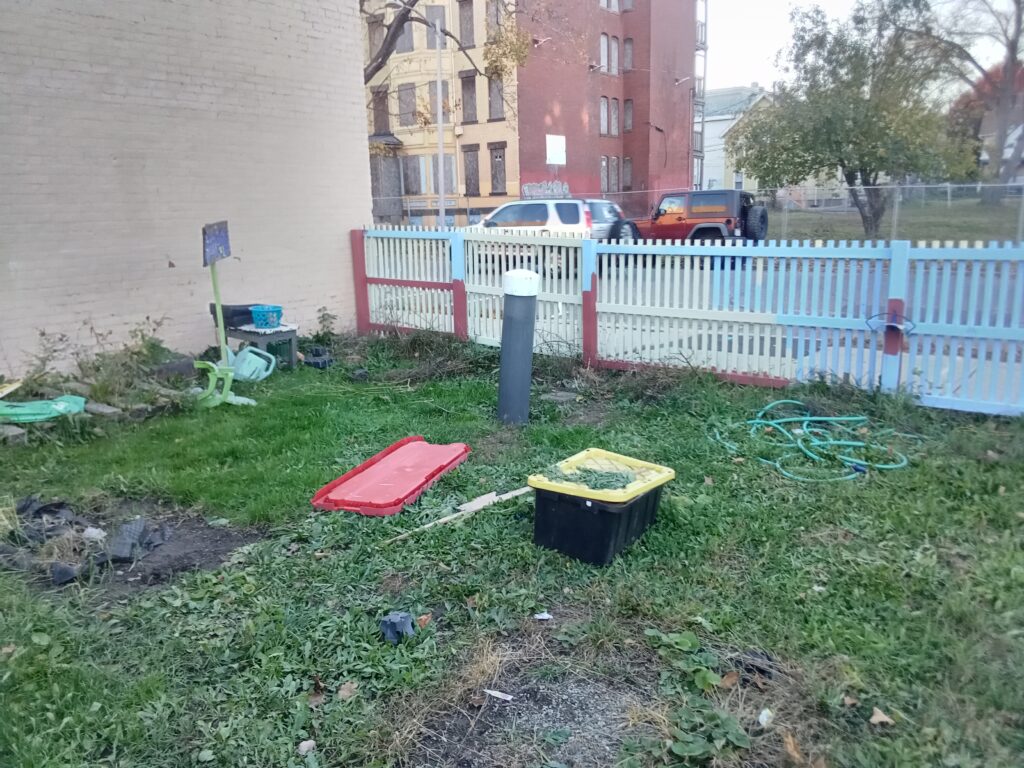

Anniversary Field link
Holyoke Community Field
As for Community Field, it was the hope of the city to develop this land into the sports complex of Holyoke. Most of Community Field was purchased before 1923 and was called that name.
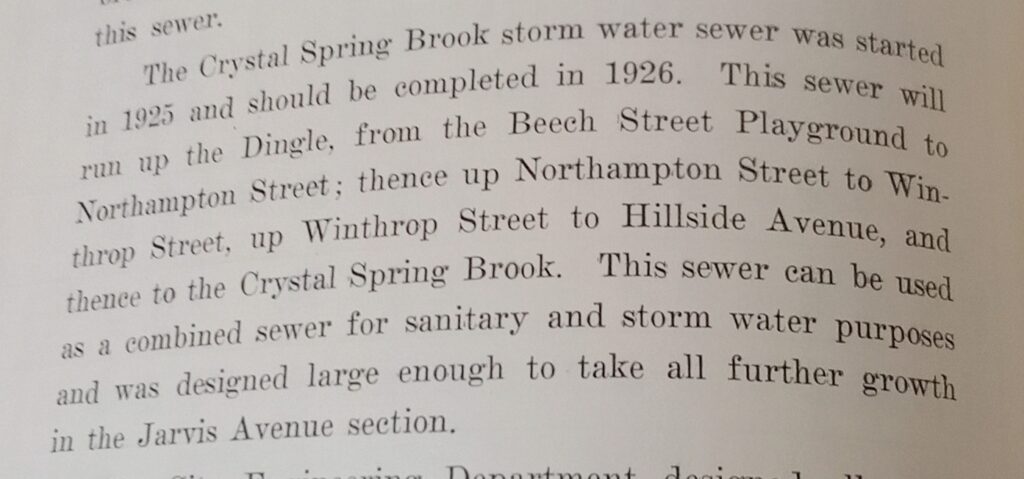
In 1926 Day Brook was placed underground. Thus Elmwood Park would lose its brook and its rustic feel. Now the Elmwood Park would become and desirable location for the sports complex. It was closer to the schools downtown.
Since Community Field was placed onto the backburner, the land was not developed for a while due to lack of funds. The park had been dedicated on October 31, 1925 but it had to wait to be developed.
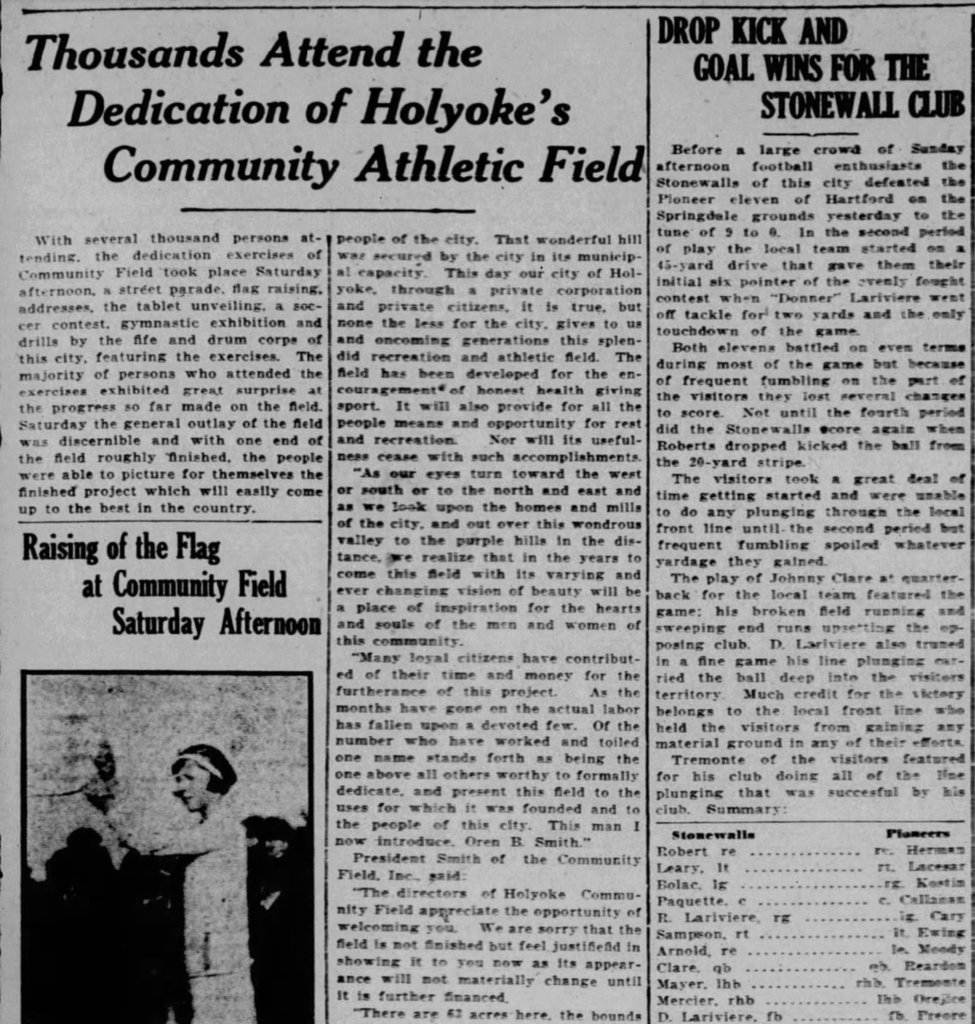
There was an attempt at a large baseball stadium in the mid to late 1920s and work was done on the grading around the perimeter. But money was hard to come by for this organization. On October 7 1929 they sold the grounds to the city. In the years after that the parks were considered for many other uses: a city golf course, a new high school, a road that circled the park and more.

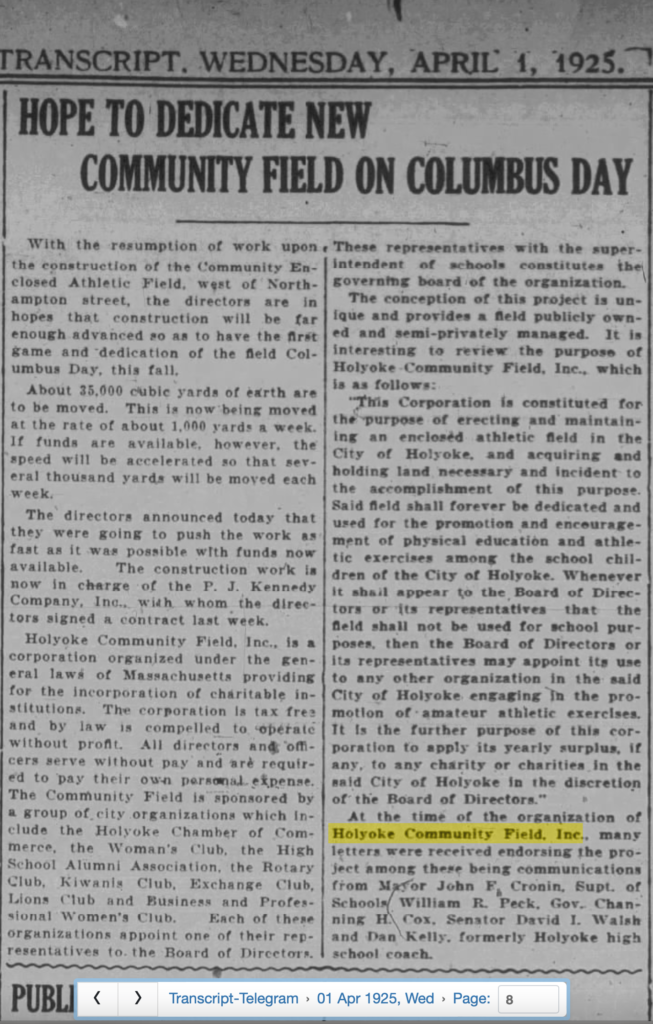
WPA Project

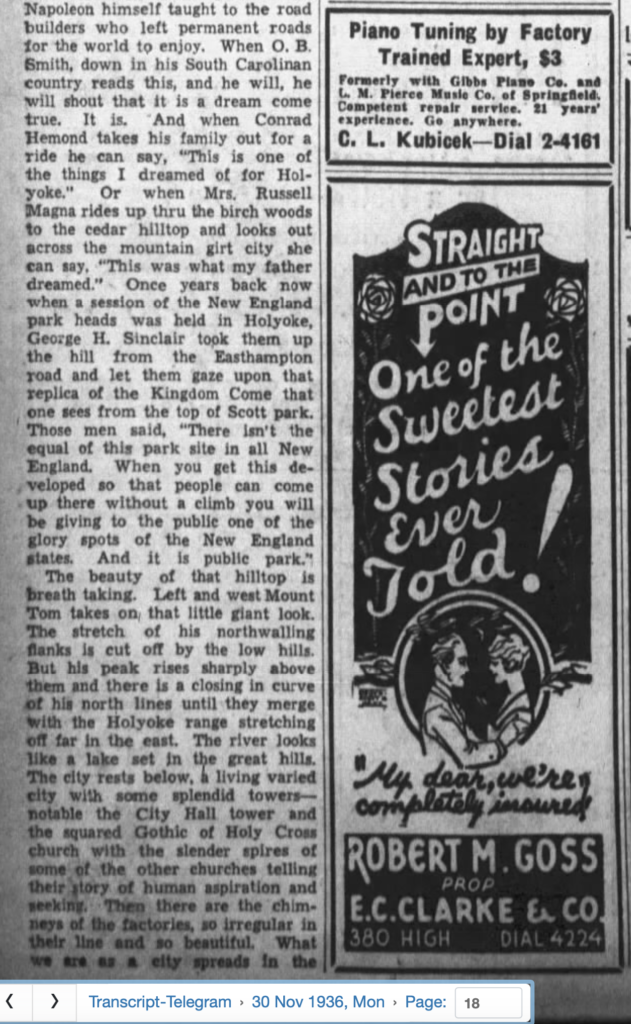
Wading Pool
It was finally developed into a recreational area in 1934. For example a wading pool was added that year and in the wintertime that pool transformed into an ice rink. This was done by the Works Progress Administration.
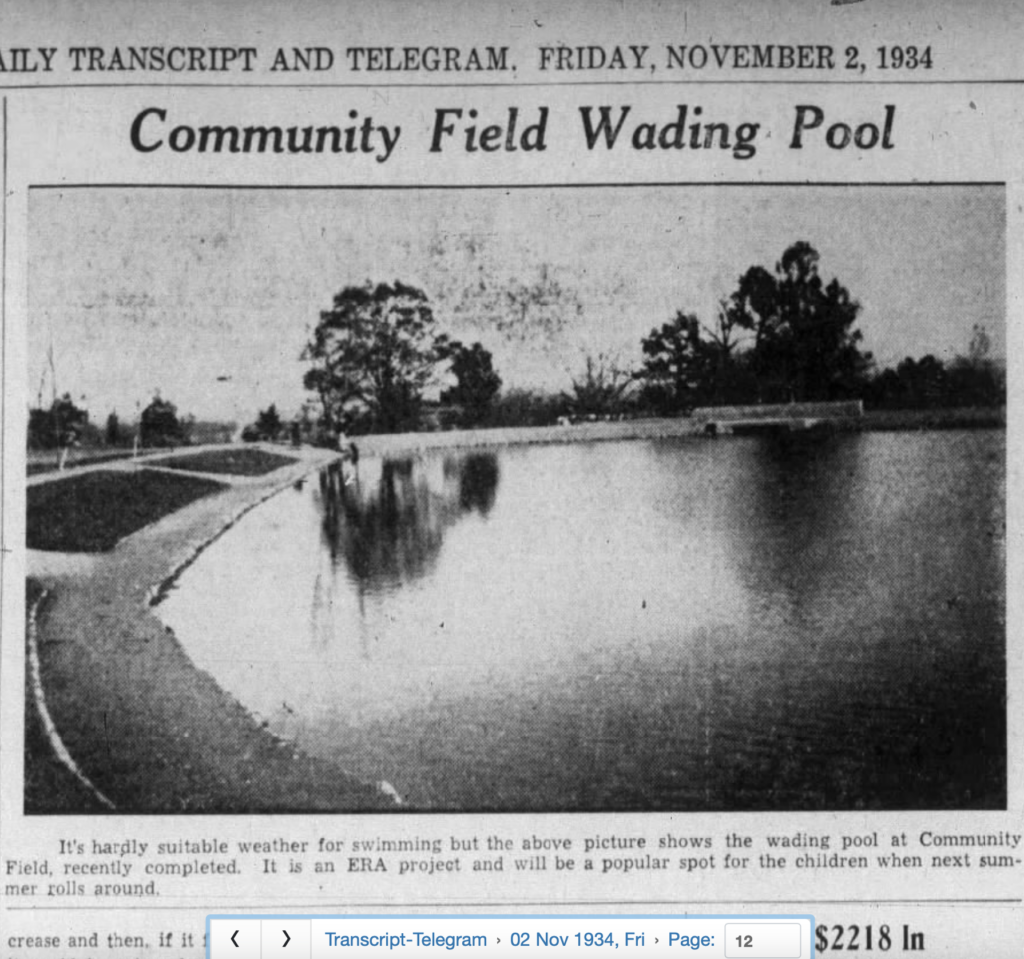
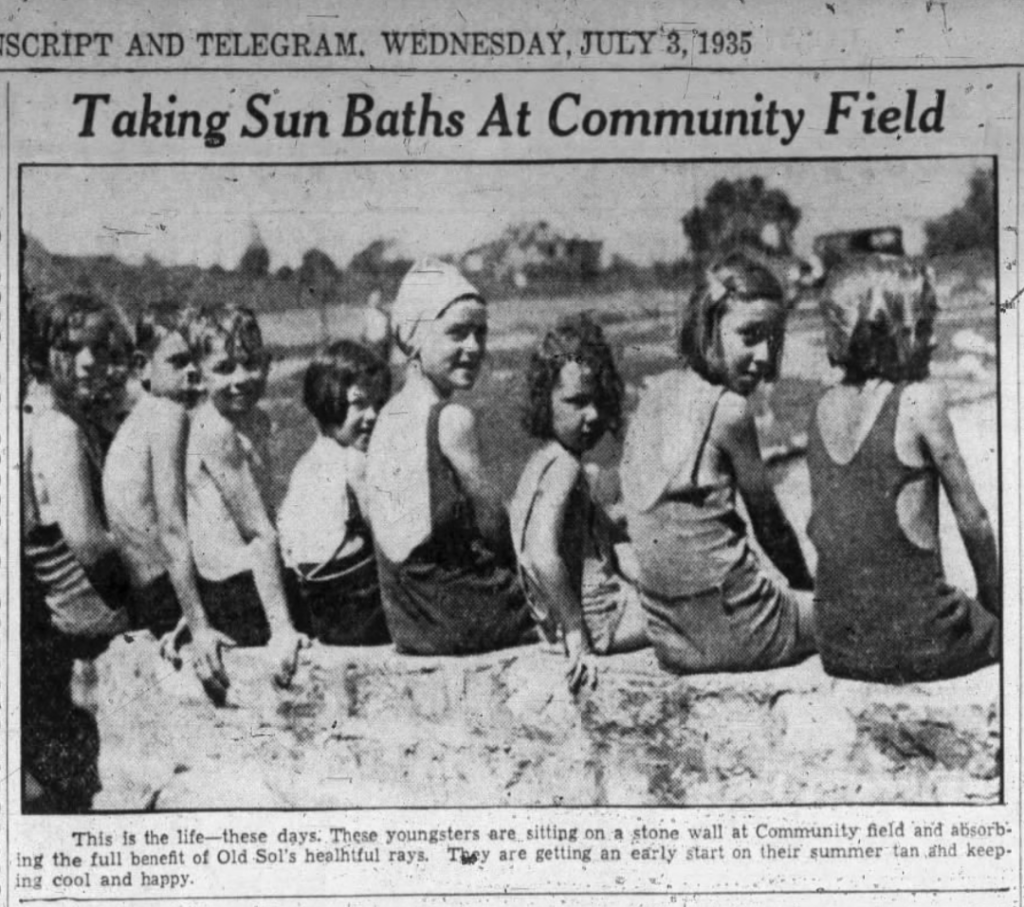

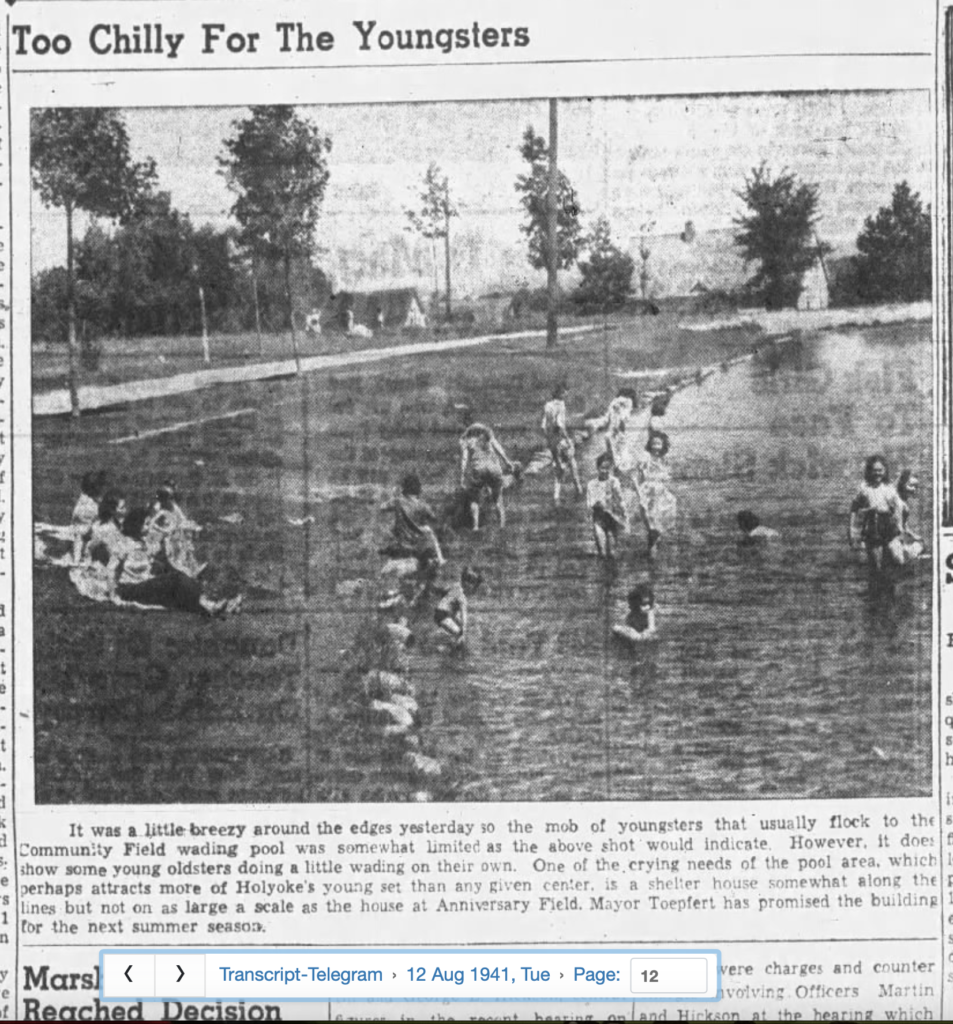
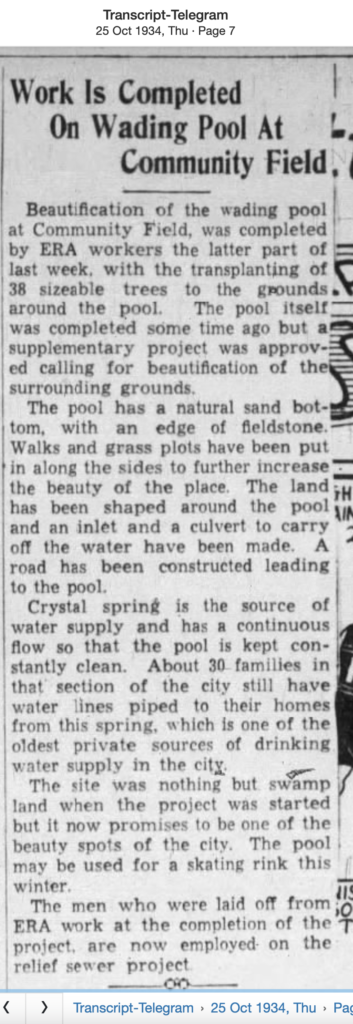
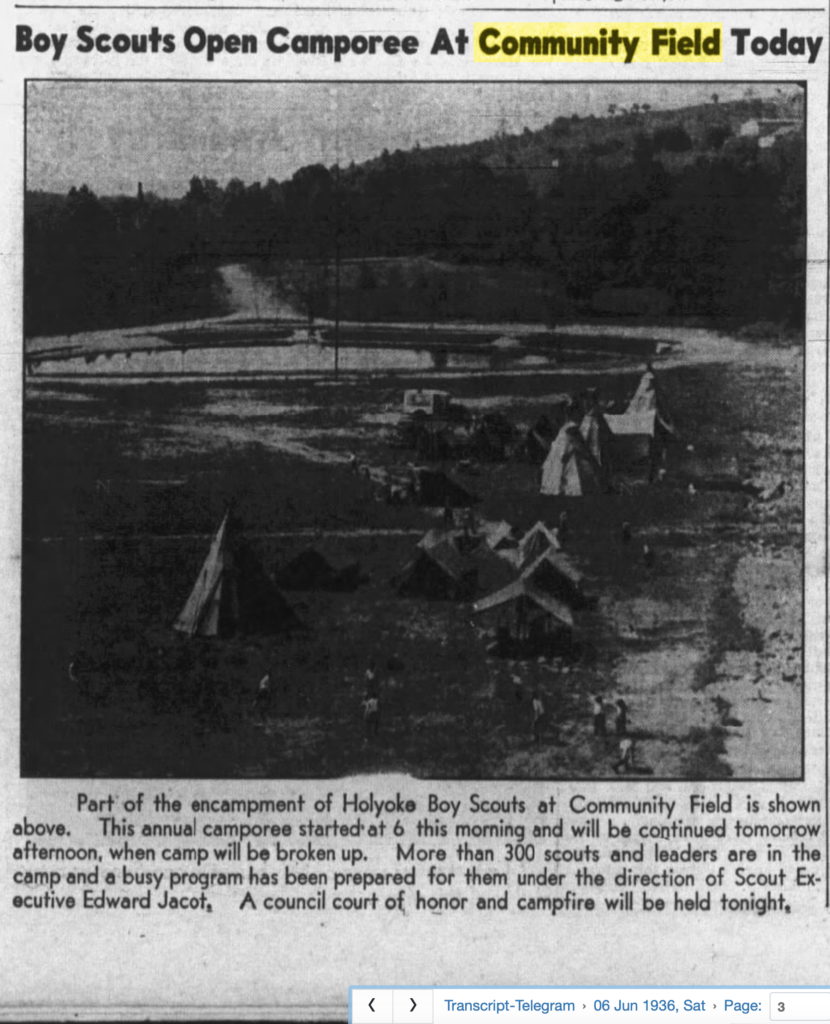
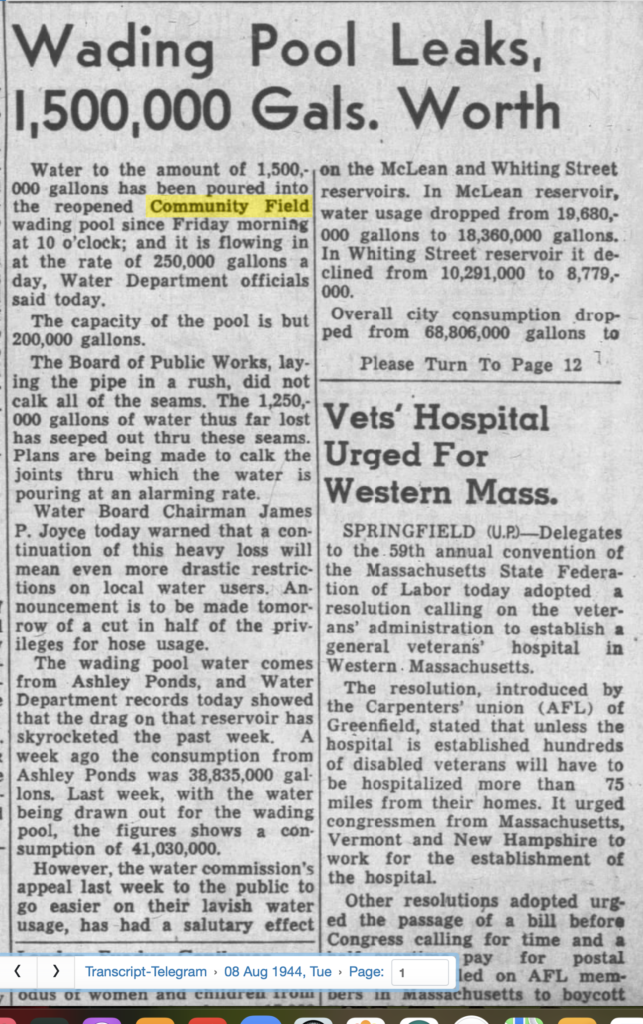
On July 1, 1953, the 1934 wading pool is replaced with a new one that is 125 feet long and oval. It is 20 inches deep at maximum. It could hold 120 children.

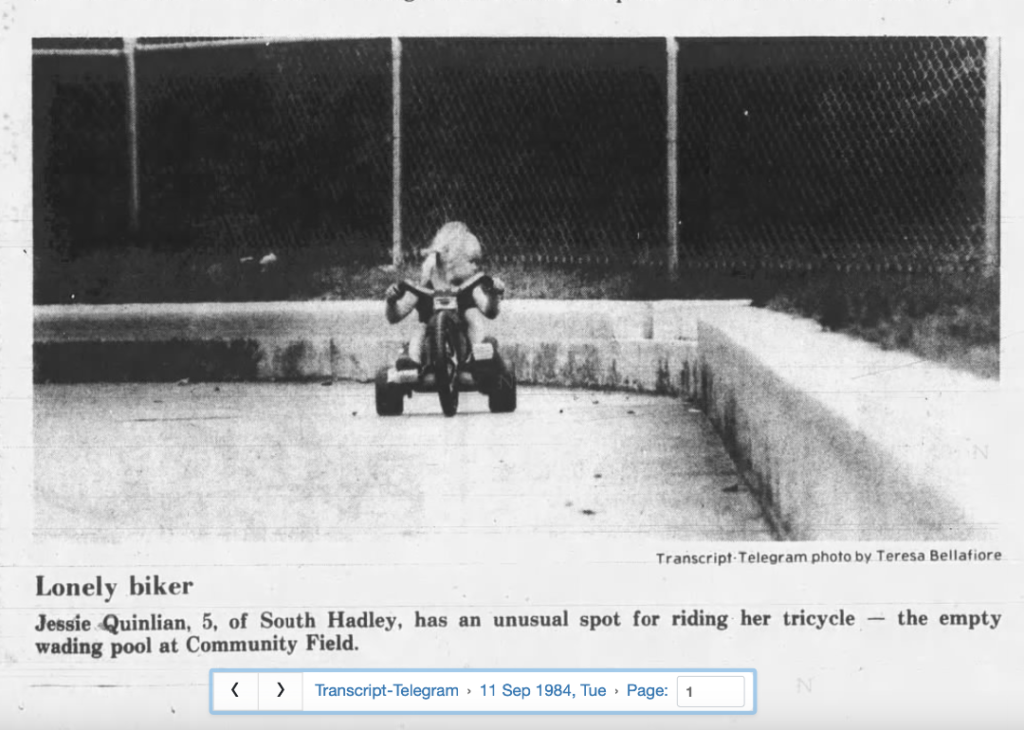
Later Works

In 1936 and 1937 a gravel road was added to the top of Anniversary Hill Park. (The road had been started in 1932 but did not go very far.)

In 1936 one hundred trees are added. 500 feet of cinder walks are put in. n 1939 a shelter house and a baseball diamond were added.


Ice skating would happen in the winter at Community Field.


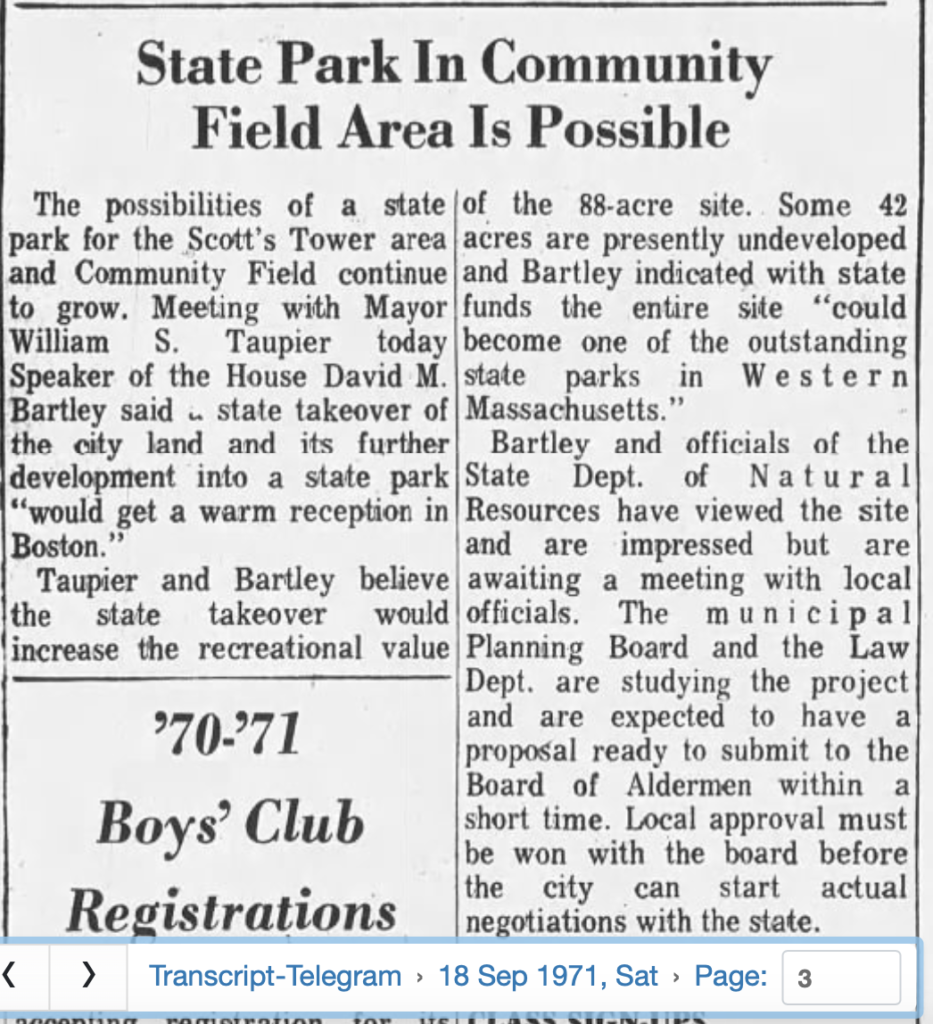
Playground
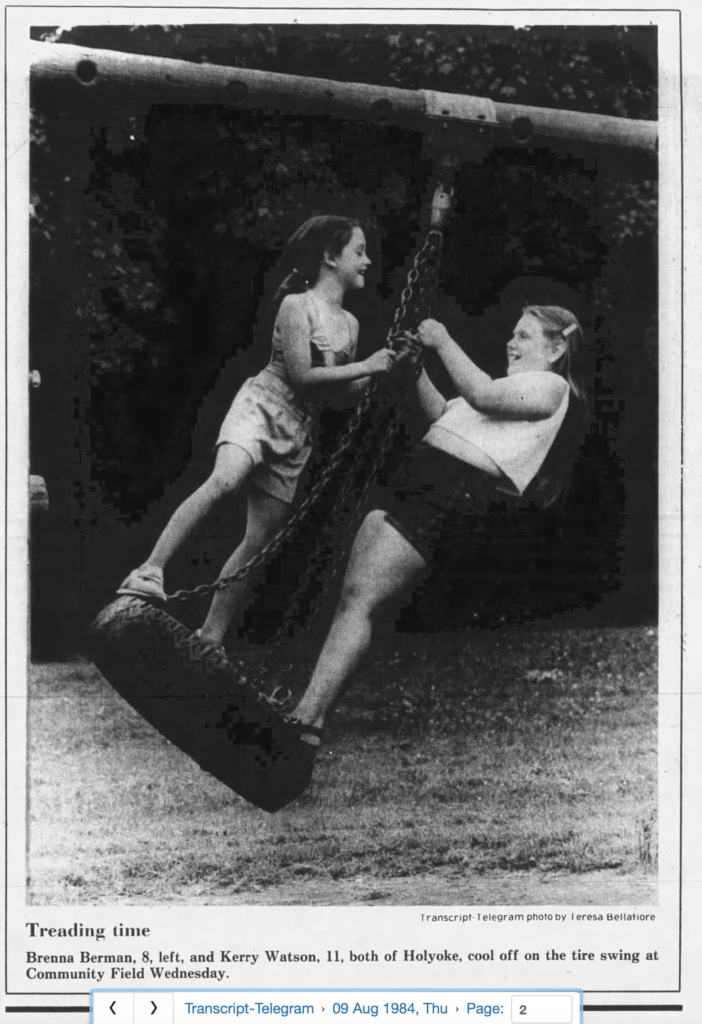
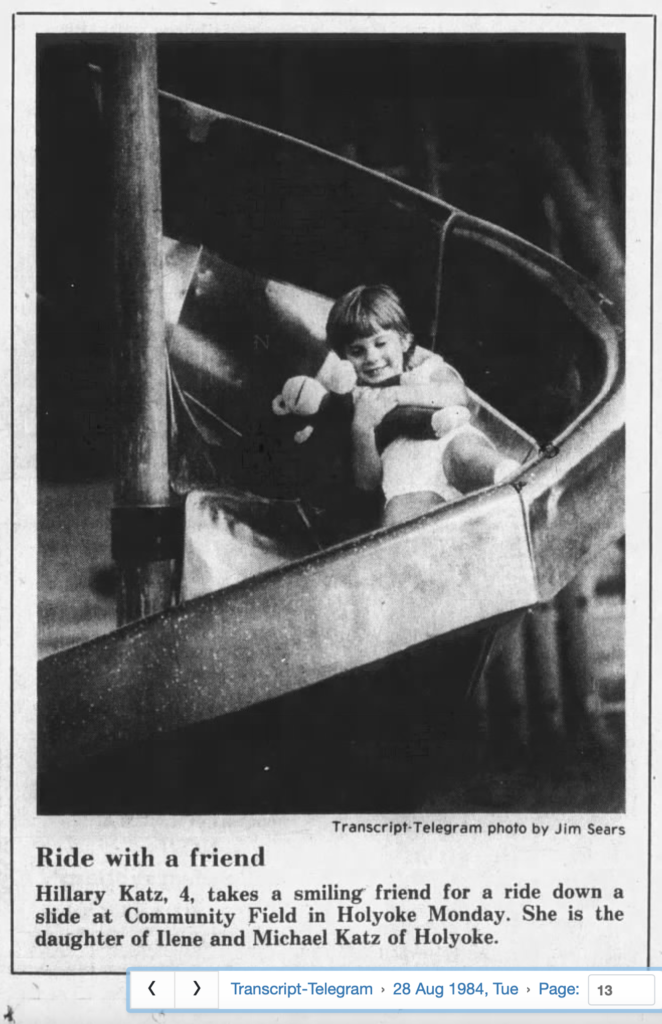
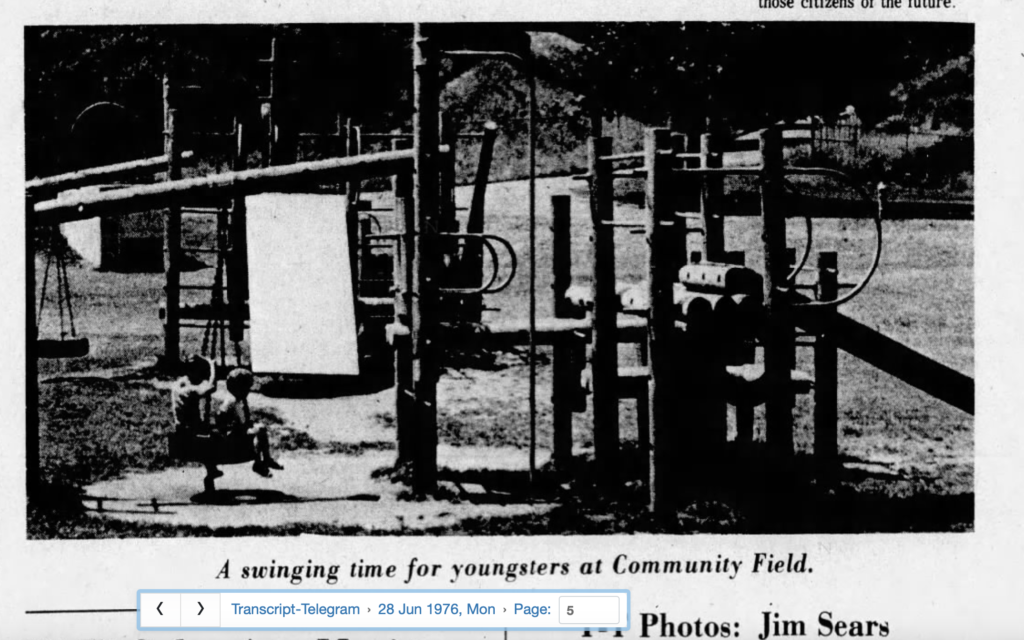
The playground at the Community Field was drastically changed in 1989. The Kelly Constant Playground was dedicated on June 22 1989.
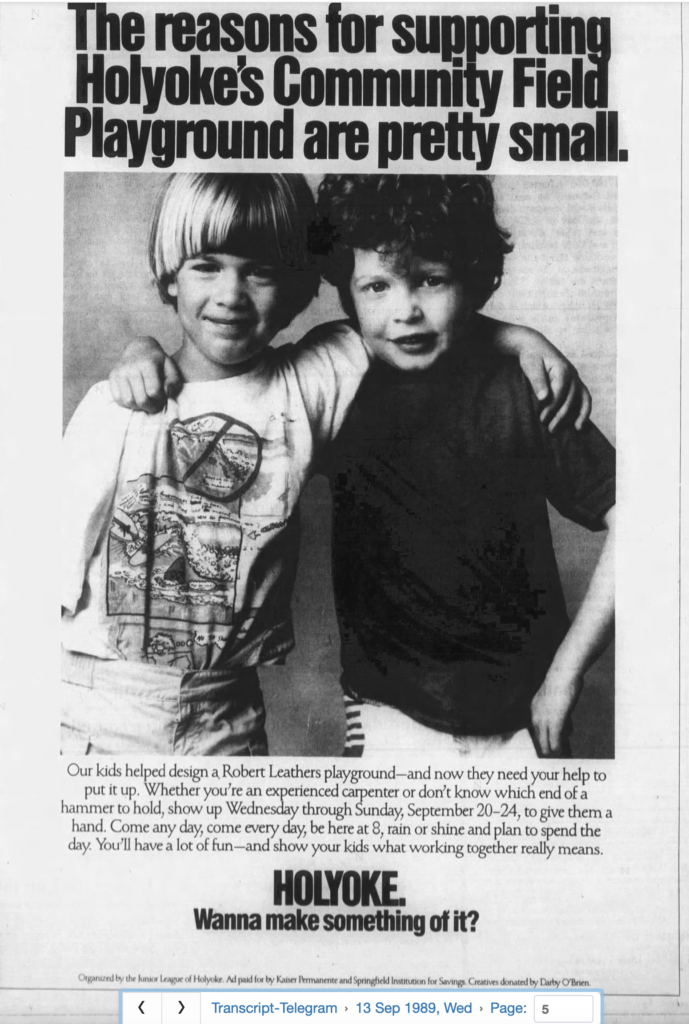


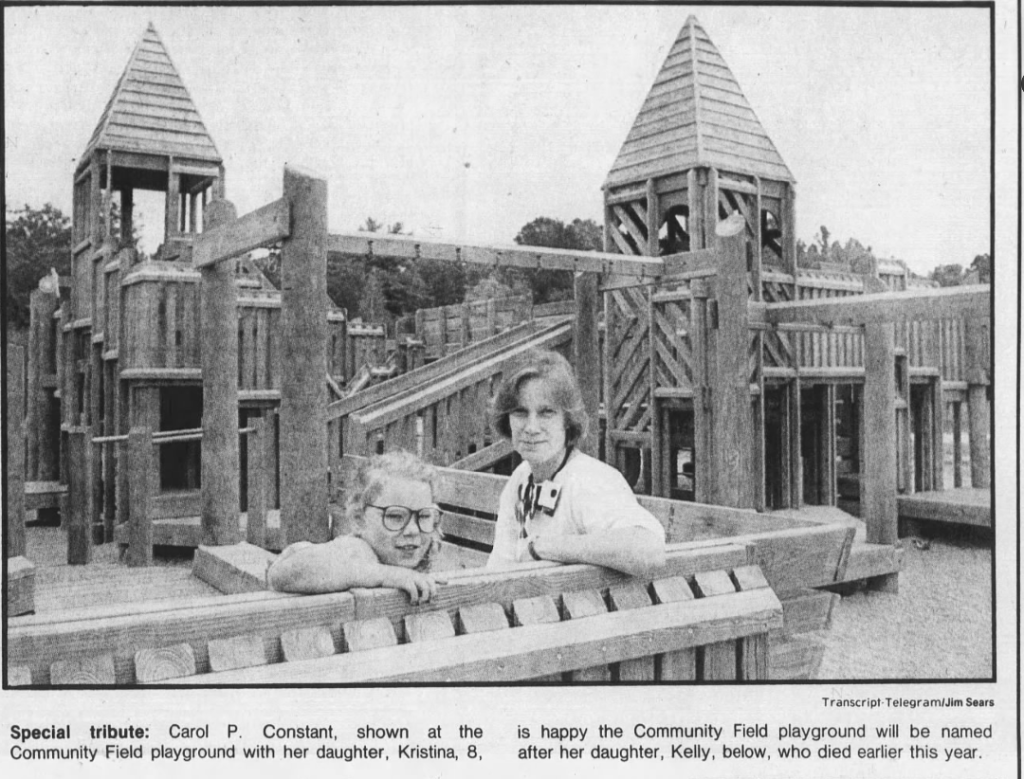


Dinosaur Tracks


Landscaping of the grounds around the dinosaur tracks is done.
Vandalism
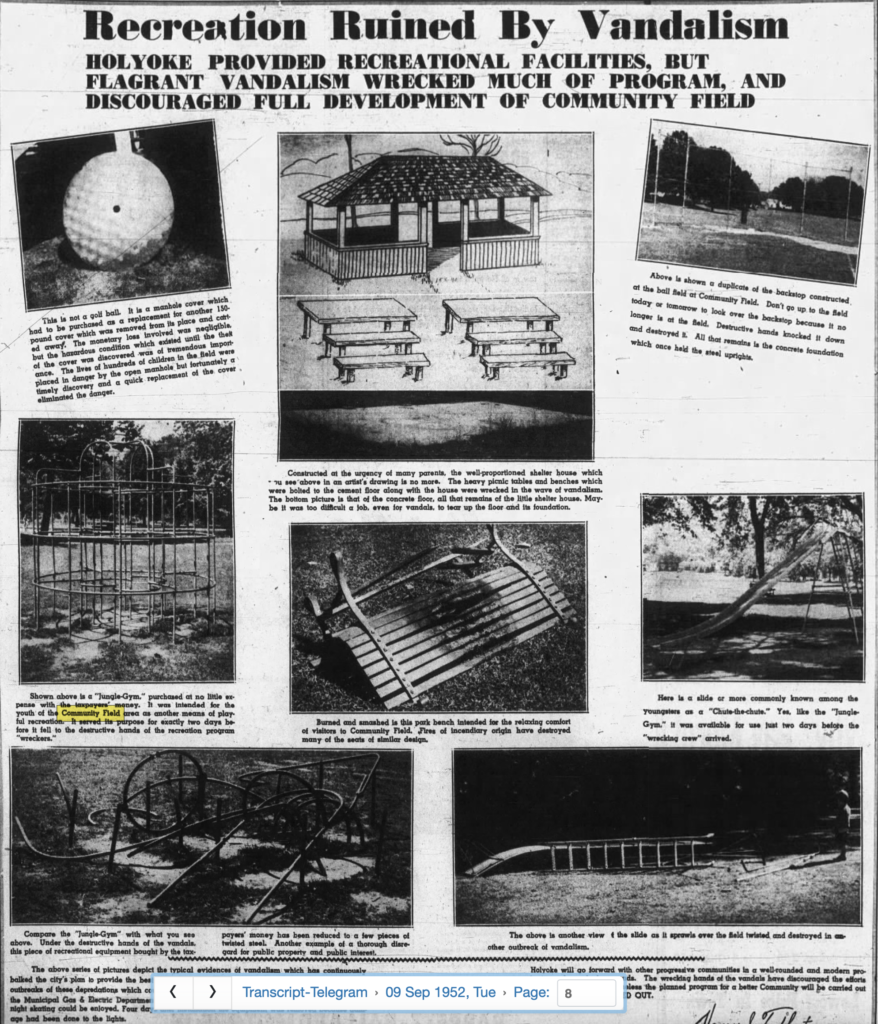
Crystal Springs
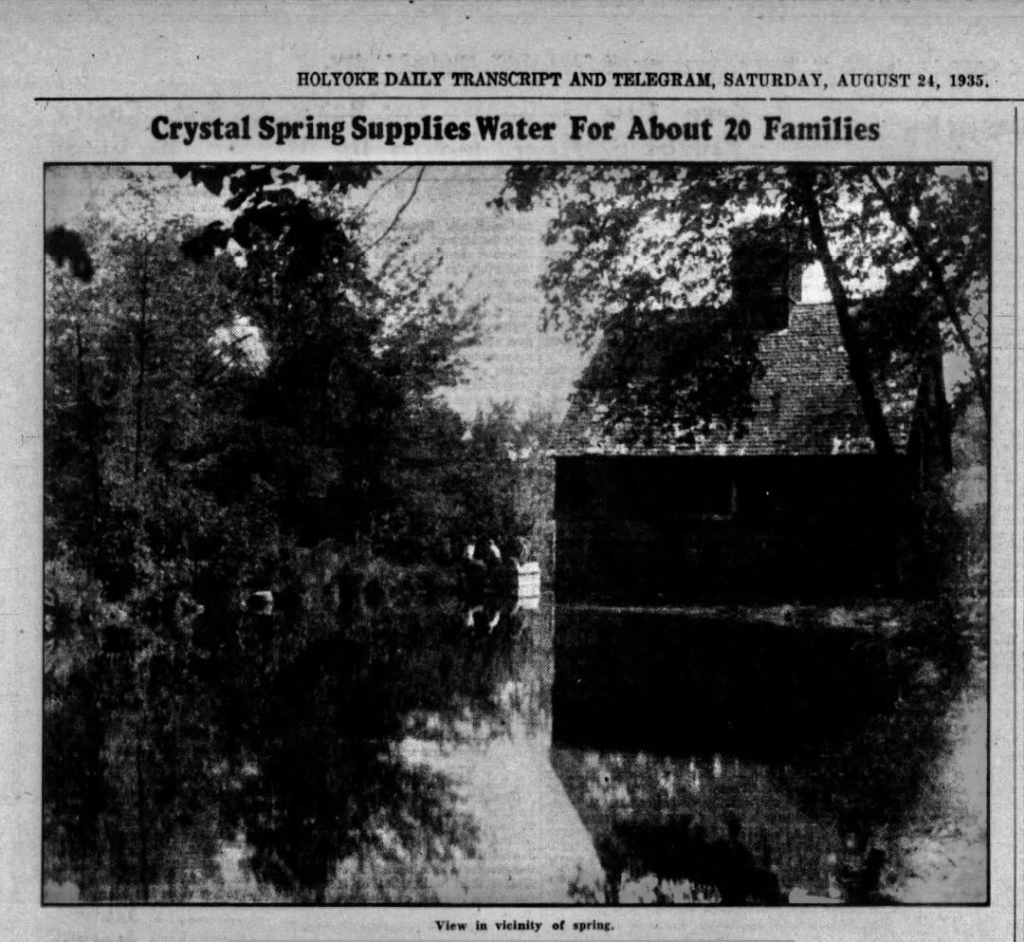
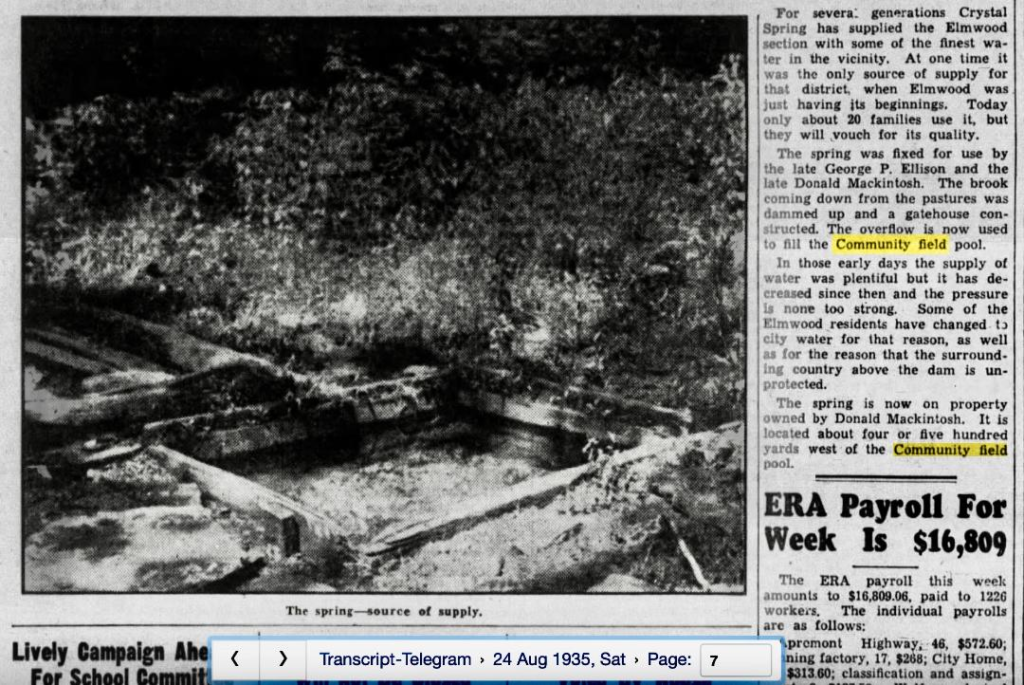

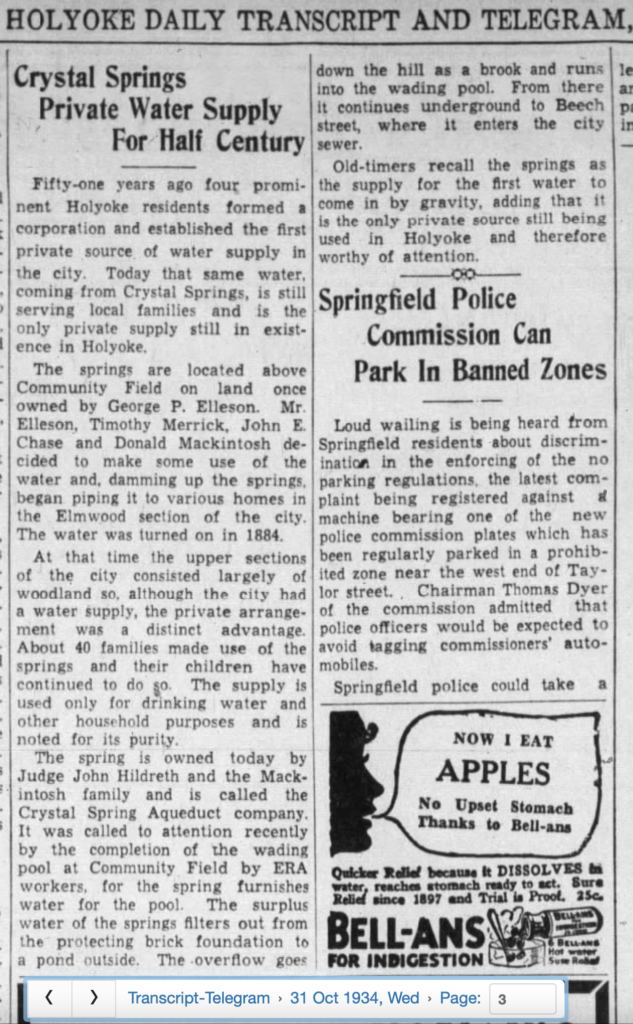

The wading pool has water from Day Brook. Day Brook passed near to the Jarvis Avenue landfill. In 1953 a new wading pool was added. In 1954 the roadway was drastically improved and the name was changed to Community Park. In 1956 hiking trails are added. In 1958 a new softball field is added.
In 1961 the parks department offers Holyoke Junior Community College 45 acres within Community Field. (Obviously, never taken up.)
Sledding and Tobogganing at Community
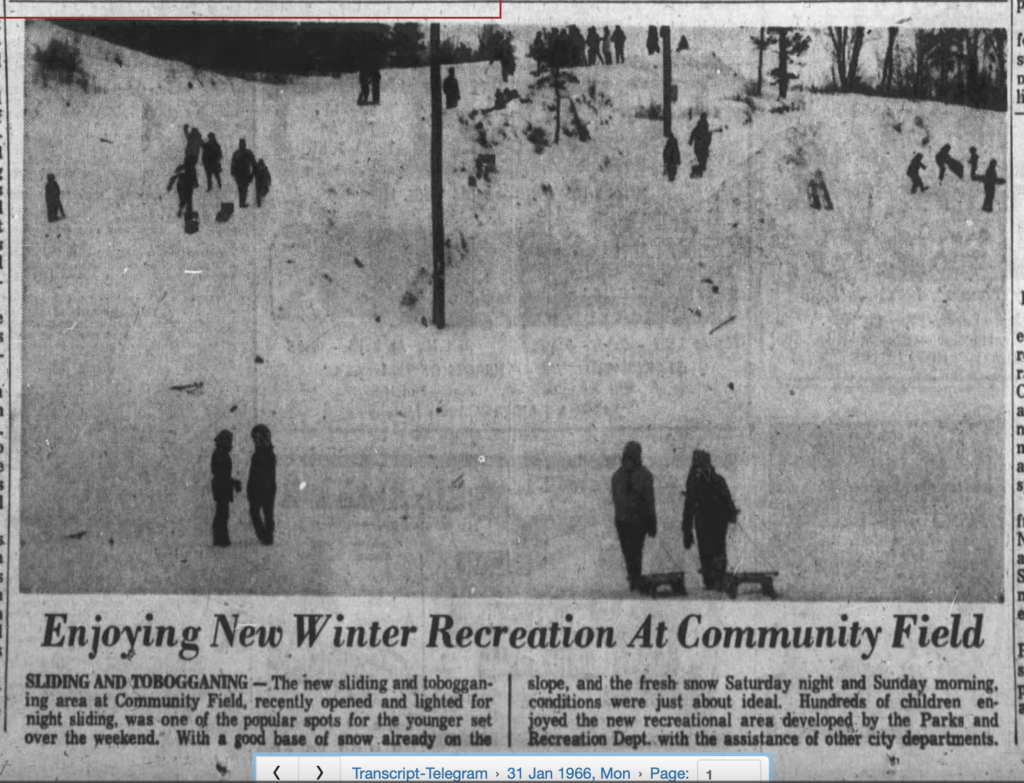
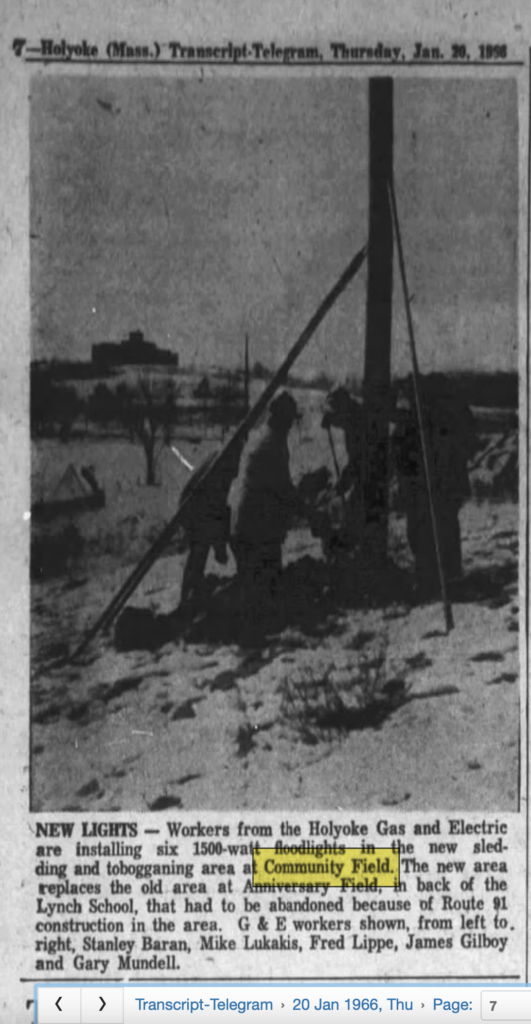
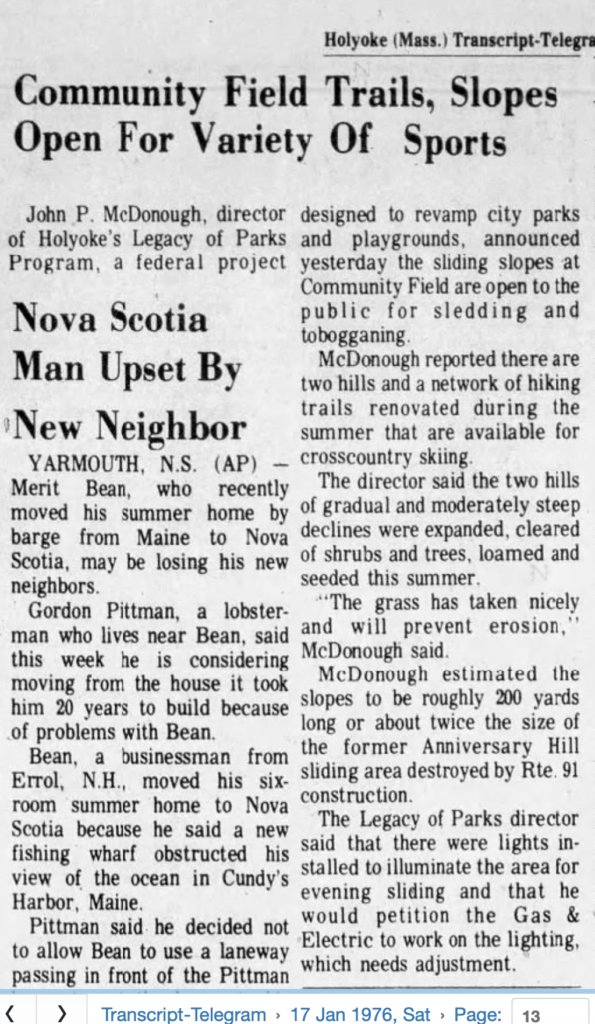
Ralph Sacks Recreation Area
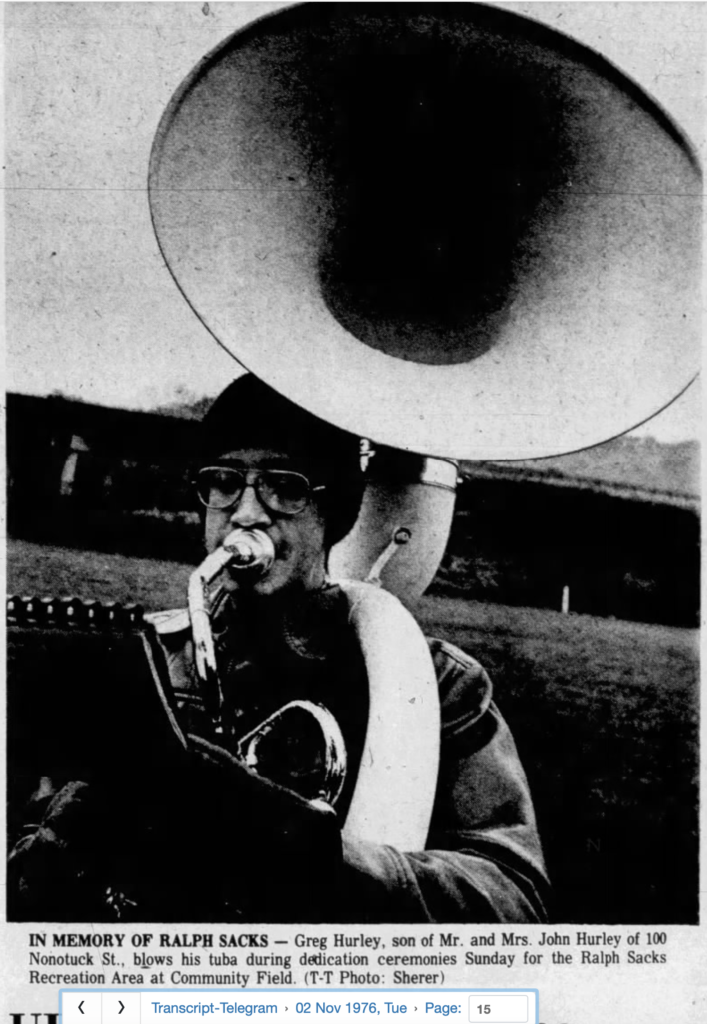
[Sanborn map analysis do not help on these parks.]
Mystery stone wall near the interstate.

At 159 Chestnut Street one can learn about the Newton family, the Holyoke Gentlemen’s Club, and the Holyoke Day Nursery.
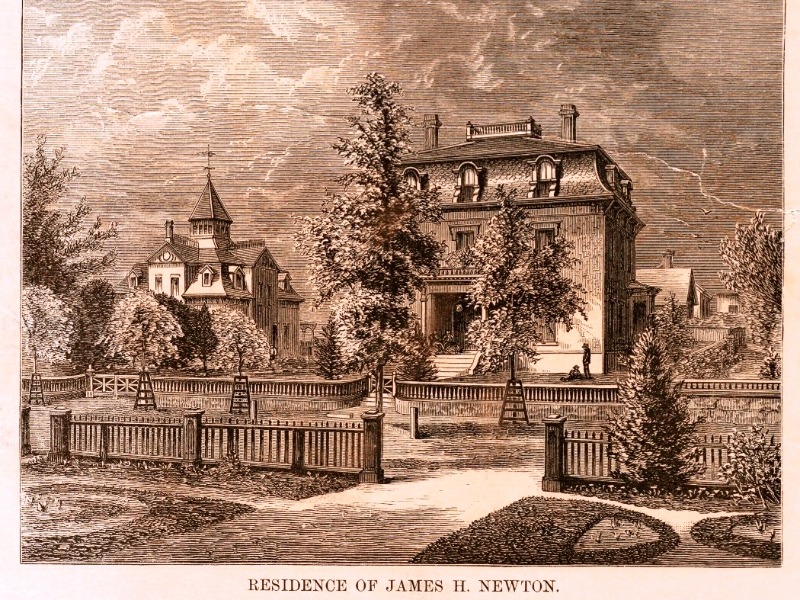
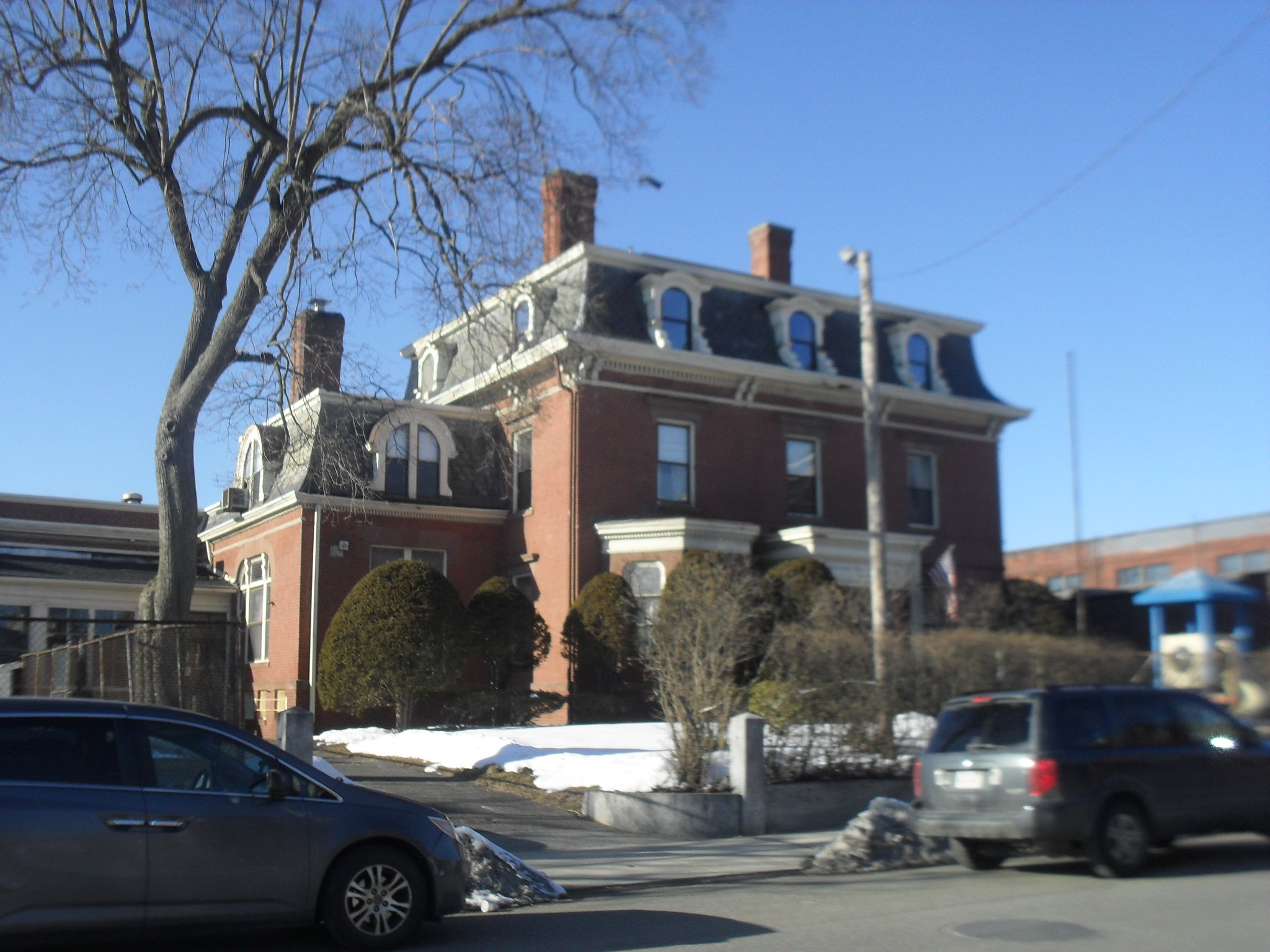
James Newton (HOUSES) owned this house until 1911. (LOCATION) This is a Second Empire building with an Italianate carriage home in back. James Newton (NEWTON) and his brothers built and ran many of the mills around Holyoke from the 1860s to the 1890s. Specifically, he was president of the Chemical Paper Mill at the foot of Jackson Street and had his administration at 19 Essex. Also, he ran the Wauregan Paper Mill and the Massachusetts Screw Company. Some others mills he started are the Franklin, Newton, and Norman.
James had a brother in law of Edward Taft and they together had Kenilworth Castle built. He was also president of the Hadley Falls Trust Company at the corner of Main and Dwight Streets and then the Home National Bank (est 1884) at 369 High Street (the YMCA building). Also he helped start up the Mechanics Saving Bank, City Bank, and Peoples’ Savings Bank.
The Holyoke Club House was here for a few years beginning in 1912 and had built the hall that runs from the house to the carriage house in 1915. The hall had a restaurant. The carriage house was converted into a pool hall. See the 1915 Sanborn map for the drastic changes. The Holyoke Club seems to have started in 1904 or 1905 with original officers of Lewis Wyckoff, A G Magna, and George Nicholson.
In 1916 a day care and nursery was started in a house near the old Providence Hospital. The Saint Agnes Guild started the day care on the Saint Jerome campus but within a couple of years moved here to Chestnut Street (in 1919). It was at first called the Saint Agnes Home. It was later called the Holyoke Day Nursery. This is about the tenth nursery in Massachusetts’ history with the first being in Boston. There were very many children in the nursery so the former restaurant was changed to a cafeteria. A playroom and classrooms were added.
The immediate neighborhood continue to develop. At 167 Chestnut was Charles Alger an undertaker. At 149 Chestnut was George Gabler a medical doctor.
From early on the Sisters of Providence had their downtown base located at the Saint Agnes Home. They did not have the convent on Hampden Street from 1912 onward so as soon as the house was purchased they moved here.
The original design is shown in this 1884 map below:

In 1889 there is already a front left side addition and a back right side addition:

In 1895 no changes:

In 1915 drastic changes:

In 1949 it is the same as 1915:

In 1956 it is the same as 1915:

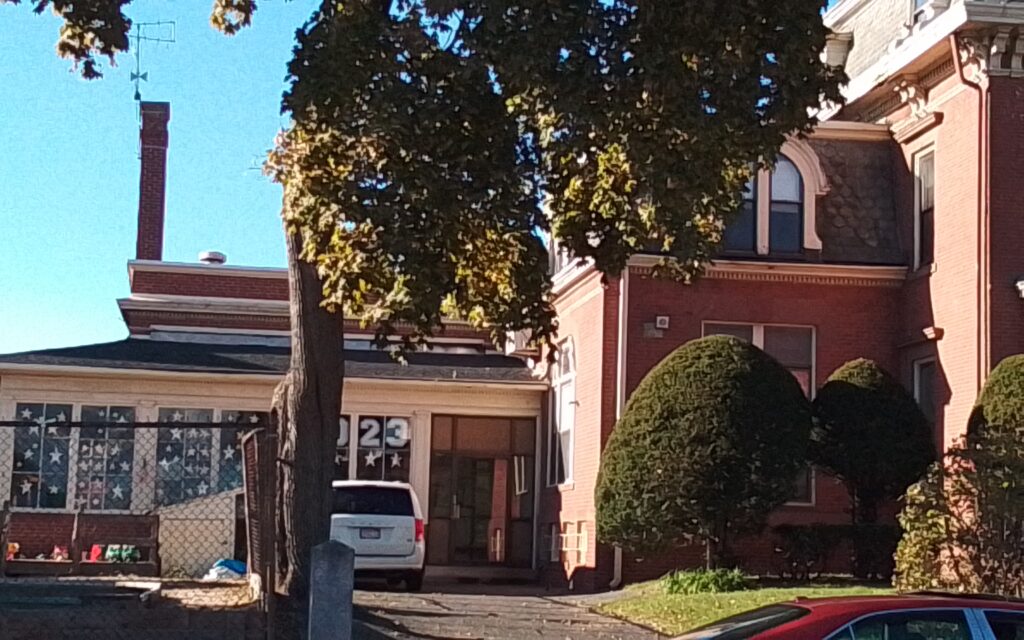
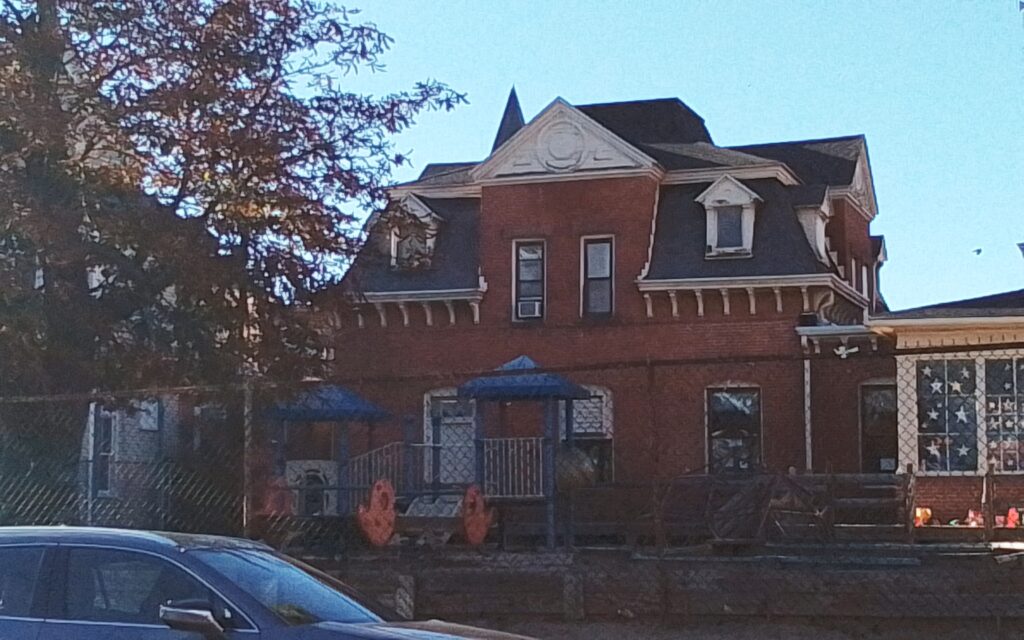
Sanborn map analysis:

Sullivan Square was made in 1889. It honors Jeremiah F Sullivan who was the mayor of Holyoke in three different years – 1889 1890 and 1892. FINDAGRAVE Sullivan lived at 1159 Dwight Street for decades (before renumbering on that street the address was 275 Dwight Street). He was on the board of directors of the Holyoke Street Railway and thus one of the trolley lines was right out his front porch. He ran a meat market at 140 High Street.
There was a renovation of the square in 1952 that made all look much better. Trees were removed in that year.
Sanborn map 1889 – Pleasant Street and West Dwight meet with the southern road being a private way – cemetery is up Dwight Street
Sanborn map 1895 – the triangle is there and the entrance to the cemetery is up Dwight Street
Sanborn map 1915 – the square is formed by Poplar Appleton and West Dwight
Granby Girl was founded in the woods behind 230 Amherst Street on November 15 1978. She was found with a gun wound to the head. She was perhaps killed in the spring of that year. There is land back there for high power electrical lines and the murdered might have driven a motor vehicle into the woods on the dirt path below the lines. She might have been dragged with a belt around her neck.
Stories posted here are the property of the Springfield Union or of the Holyoke Transcript Telegram. They are posted and used for educational intent and are organized as such.


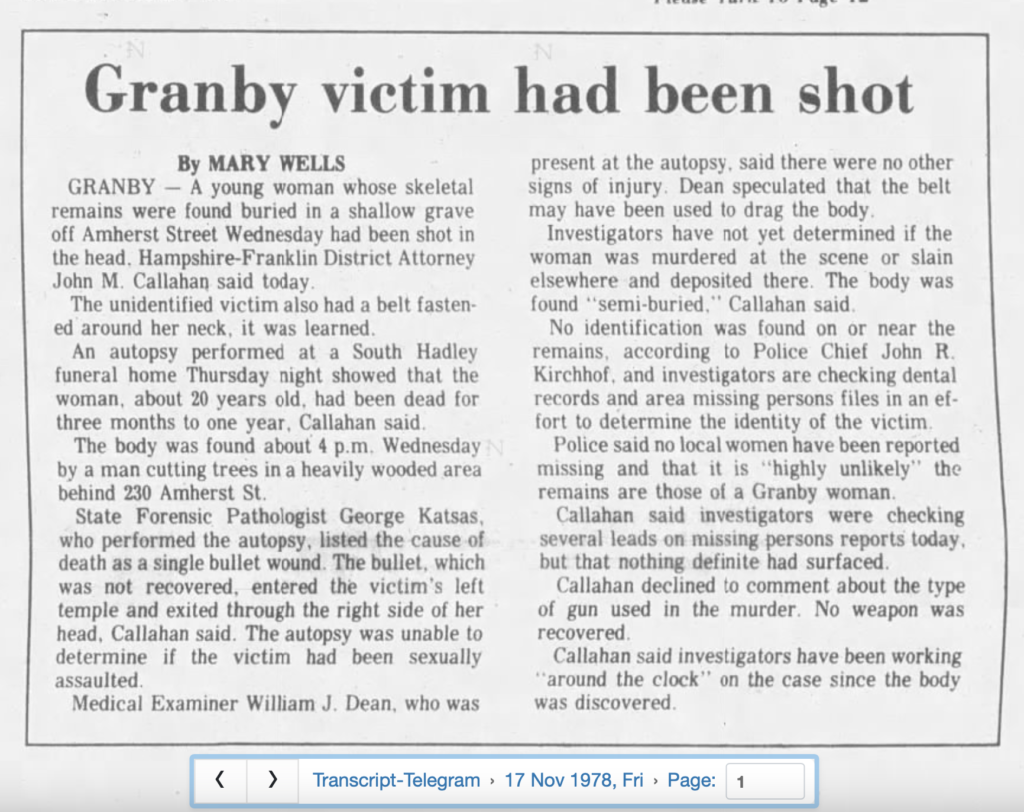
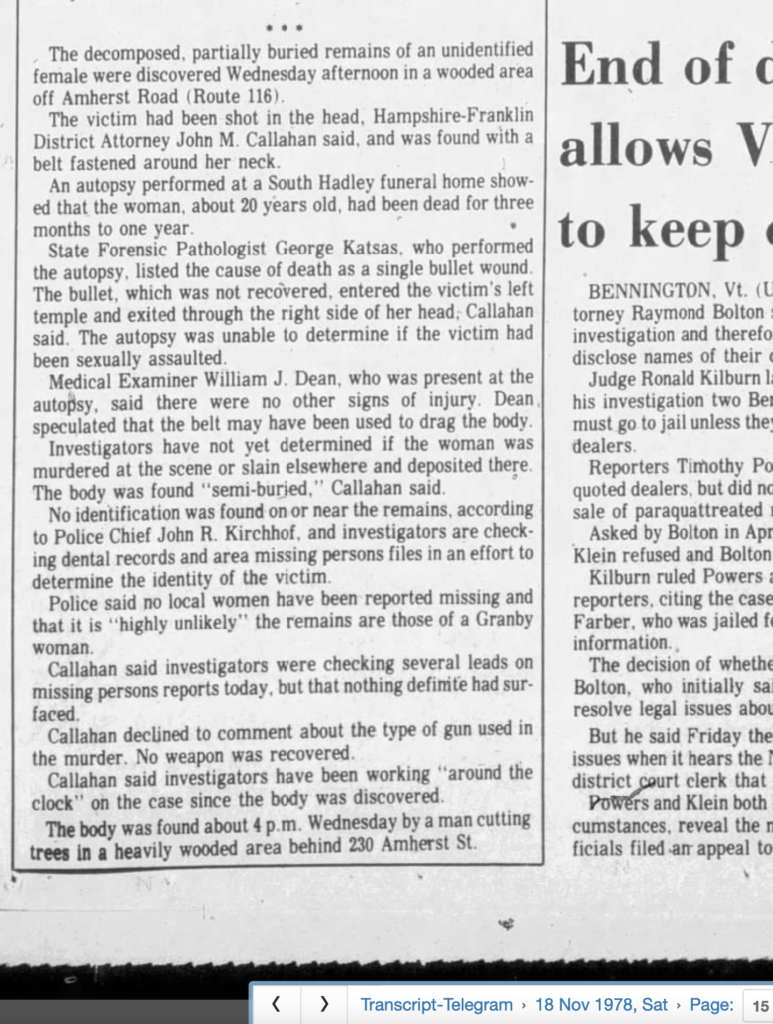
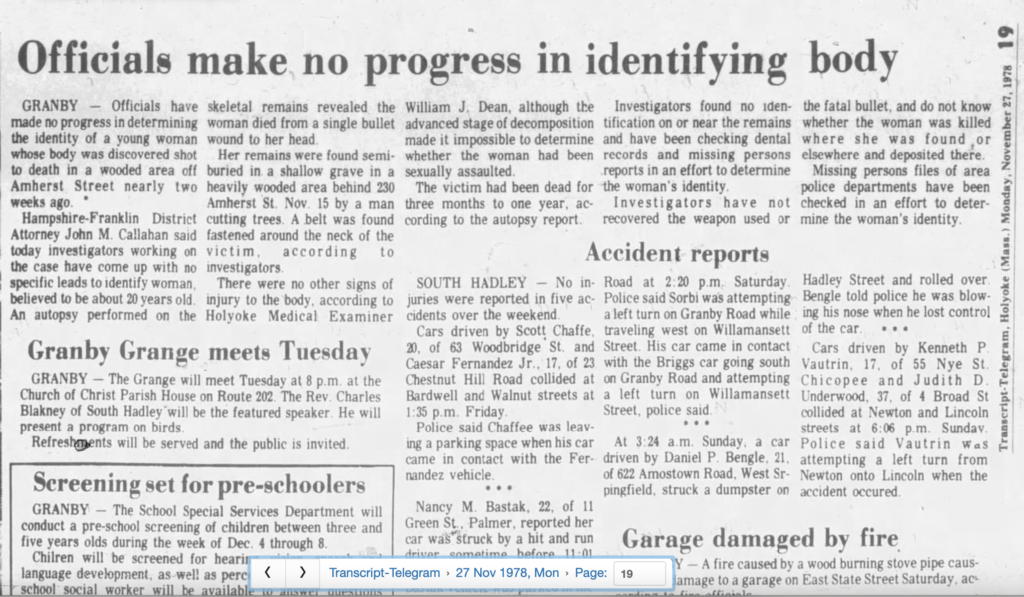

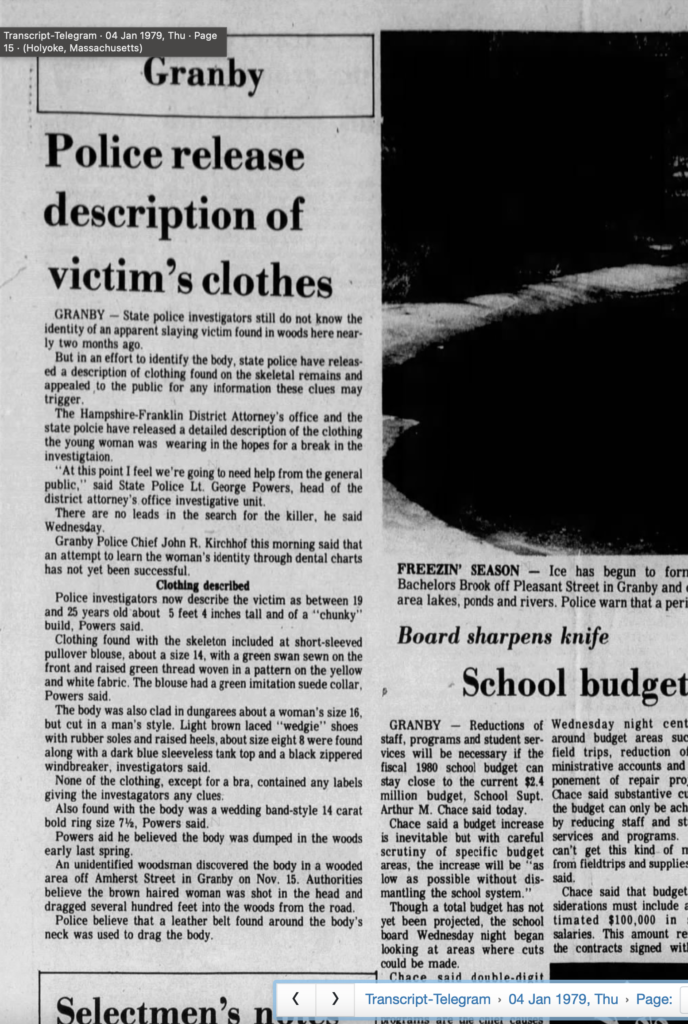

See you in 2025! Schedule

Earlier this year:
The Six Navigational Canals of the Connecticut River
Burial Grounds of South Hadley and Granby throughout their History
Saint Stanislaus Cemetery in Easthampton
Rodphey Sholom Cemetery of Chicopee
West Street Cemetery of Granby
Rohan Park (of Holyoke) and its Neighborhood
Saint Stanislaus Cemetery (of Chicopee)
Church Street and Edward Bellamy’s Neighborhood
Fairview Cemetery and Holy Rosary Cemetery of Chicopee
The Six Power Canals on the Chicopee River
Immaculate Conception, Sacred Heart Churches, and Saint Brigids Cemetery
A Mill in Holyoke through Time – the Skinner Silk Mill
presentation: The Holyoke Canal and its Mills (CANALS – MILLS)
Holyoke Canal System Walking Tour
Burial Grounds of Granby and South Hadley throughout their History
South Amherst Cemetery and Commons
Lower Mill Pond of Easthampton
A House in Holyoke through Time – The Lovering Schoolhouse – (presentation)
The Wistariahurst Neighborhood – a Sidewalk Walking Tour
Extinguisher Company number 2 has 8 men on Northampton Street near Manchester Grounds. It has a New England Fire Extinguisher. Their company station had a fire in 1875 and since then until at least 1879 the apparatus has been stored in private places.